Automotive AI Service: Revolutionizing Dealerships in 2025
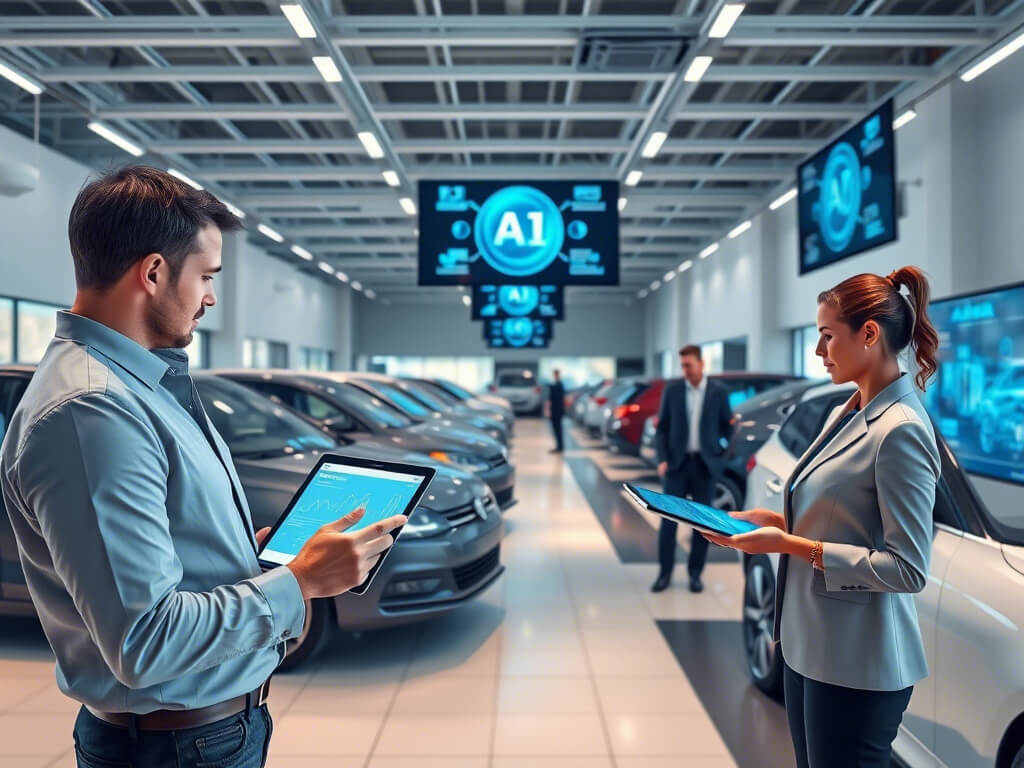
The automotive industry is undergoing an AI revolution, with automotive AI service tools reshaping everything from customer service to predictive maintenance. Whether you’re a dealership, repair shop, or fleet manager, AI is no longer optional—it’s essential for staying competitive.
In this guide, we’ll explore:
- How AI is transforming automotive services
- Best AI tools for dealerships & repair shops
- How SimpSocial’s AI boosts lead conversion & customer engagement
Why Automotive AI Service is a Game-Changer
1. Smarter Customer Interactions
- AI chatbots (like SimpSocial’s Sarah AI) handle 24/7 customer inquiries
- Voice assistants schedule appointments & answer FAQs
2. Predictive Maintenance & Diagnostics
- AI analyzes engine data to predict failures before they happen
- Reduces downtime & repair costs by up to 30%
3. Automated Marketing & Sales
- AI personalizes email, SMS, and ad campaigns
- Identifies high-intent buyers for faster conversions
“Dealerships using AI see 40% faster response times and 25% more closed deals.”
Top 5 Automotive AI Service Applications
1. AI-Powered Virtual Assistants
- Sarah AI (SimpSocial): Engages leads via SMS, email, and calls
- Chatbots: Handle service booking & FAQs on websites
2. Smart Diagnostics & Repair
- AI scans OBD-II data to detect issues early
- Recommends optimal repair solutions
3. Automated Marketing Campaigns
- AI segments leads based on behavior & purchase intent
- SimpSocial’s AI-driven follow-ups boost engagement
4. Inventory & Pricing Optimization
- AI suggests ideal pricing based on market trends
- Predicts high-demand vehicles
5. Enhanced Customer Retention
- AI sends personalized service reminders
- Tracks customer satisfaction in real-time
How SimpSocial Enhances Automotive AI Service
SimpSocial isn’t just another tool—it’s a complete AI solution for dealerships:
- 24/7 Lead Engagement: Sarah AI responds instantly to inquiries.
- Automated Follow-Ups: No lead slips through the cracks.
- CRM Integrations: Syncs with DealerCenter, AutoManager, and Dealertrack.
*Case Study: A dealership using SimpSocial reduced follow-up time by 90% and increased sales by 35% in 6 months. *
Top 3 AI Resources for Automotive Businesses
- Campanella’s Auto Repair (AI in Auto Repair)
- Getac (Automotive Service Tech)
- Salesforce Automotive AI (AI for Dealers)
Future of Automotive AI Service
- Fully Autonomous Repair Bays: AI-guided robotic repairs
- AI-Powered Test Drives: Virtual reality showrooms
- Predictive Customer Service: AI anticipates needs before issues arise
Final Thoughts
Automotive AI service is transforming the industry—faster diagnostics, smarter marketing, and seamless customer experiences. With SimpSocial, dealerships automate engagement while delivering personalized service at scale.
Ready to upgrade your dealership with AI? Try SimpSocial’s free demo today!
Make Me More Profit Now
Automotive Email Marketing That Converts in 2025

In the digital age, automotive email marketing remains one of the most effective ways to nurture leads and close more deals. With 89% of marketers relying on email as their primary lead generation channel, dealerships that master email campaigns gain a competitive edge.
This guide will show you:
- How to craft high-converting automotive emails
- Best practices for segmentation & personalization
- How AI-powered tools like SimpSocial automate success
Why Automotive Email Marketing Works
Email generates $42 for every $1 spent (DMA) – here’s why it’s essential for dealers:
1. Builds Lasting Customer Relationships
- Service reminders keep customers coming back
- Trade-in offers reactivate past buyers
2. Converts 3X Better Than Social Media
- 22% open rates for automotive emails (vs. 5% Facebook reach)
- Personalized emails drive 6X higher transaction rates
3. Complements Other Marketing Channels
- Reinforce Facebook ad messages
- Follow up with website visitors who didn’t convert
“Dealerships using SimpSocial’s automated email sequences see 35% more service appointments and 28% higher sales conversions.”
5 Automotive Email Campaigns That Convert
1. Lead Nurturing Drip Campaigns
- Welcome series for new leads
- Inventory alerts based on customer preferences
2. Service Department Emails
- Mileage-based maintenance reminders
- Seasonal check-up specials
3. Sales Event Promotions
- Holiday sales announcements
- Clearance event countdowns
4. Customer Re-engagement
- “We miss you” offers for inactive customers
- Lease-end notifications
5. Post-Purchase Follow-Ups
- Satisfaction surveys
- Referral reward programs
How SimpSocial Revolutionizes Automotive Email Marketing
SimpSocial takes email marketing to the next level with:
AI-Powered Personalization
- Sarah AI tailor’s messages based on browsing behavior
- Dynamic content adjusts to each recipient
Smart Automation
- Triggers emails based on CRM activity (test drives, website visits)
- Auto-responds to customer inquiries 24/7
Seamless Integrations
- Connects with your DealerCenter, AutoManager, or Dealertrack systems
- Syncs email campaigns with SMS and voice follow-ups
*Case Study: A dealership using SimpSocial’s automated email flows increased service revenue by 40% and reduced no-shows by 65%*
7 Pro Tips for High-Converting Emails
- Segment Your Lists (new leads vs. loyal customers)
- Write Mobile-Friendly Content (62% are opened on phones)
- Use Engaging Subject Lines (“Your Dream [Vehicle] is Here!”)
- Include Clear CTAs (“Schedule Test Drive” buttons)
- A/B Test Everything (subject lines, send times, content)
- Track Key Metrics (open rates, click-throughs, conversions)
- Automate Follow-Ups (SimpSocial responds within minutes)
Top 3 Email Marketing Resources
Future of Automotive Email Marketing
- AI-Generated Content: Auto-write personalized emails
- Predictive Send Times: AI determines when each customer opens emails
- Interactive Emails: Schedule test drives directly from email
Final Thoughts
Automotive email marketing isn’t just about sending messages—it’s about delivering the right message to the right person at the perfect time. With SimpSocial, dealerships automate this process while maintaining a personal touch that converts browsers into buyers.
Ready to transform your email strategy? Explore SimpSocial’s email automation today!
Make Me More Profit Now
Top Sales AI Tools to Boost Conversions in 2025

The sales landscape is undergoing a massive transformation, thanks to sales AI tools. These intelligent platforms automate repetitive tasks, enhance lead engagement, and drive higher conversion rates—making them essential for modern sales teams.
In this comprehensive guide, we’ll explore the best AI tools, key features to look for, and how AI-powered platforms like SimpSocial are revolutionizing sales processes, especially in the automotive industry.
Why Sales AI Tools Are a Game-Changer
Traditional sales methods are no longer enough. Buyers expect instant responses, personalized interactions, and seamless experiences. That’s where sales AI tools come in, offering:
- Automated Lead Follow-Ups– No more missed opportunities.
- 24/7 Customer Engagement– AI chatbots like Sarah AI (from SimpSocial) respond instantly.
- Data-Driven Insights– AI analyzes customer behavior to optimize sales strategies.
- Higher Conversion Rates– Faster responses = more closed deals.
According to Salesforce, AI-powered sales tools can increase productivity by 40%.
Top Features of the Best Sales AI Tools
1. AI-Powered Chatbots & Virtual Assistants
Tools like SimpSocial’s Sarah AI engage leads 24/7, answering FAQs, scheduling appointments, and nurturing prospects—even outside business hours.
2. Automated Multi-Channel Outreach
The best sales AI tools automate SMS, email, and voice follow-ups, ensuring leads stay engaged across all touchpoints.
3. CRM & DMS Integration
Seamless integration with CRM (Customer Relationship Management) and DMS (Dealer Management Systems) ensures smooth data flow and better lead tracking.
4. Predictive Analytics & Lead Scoring
AI analyzes customer interactions to prioritize high-intent leads, helping sales teams focus on the hottest prospects.
5. Personalized Sales Recommendations
AI-driven tools suggest customized offers, discounts, and follow-ups based on buyer behavior.
How SimpSocial Enhances Sales with AI
SimpSocial isn’t just another sales AI tool—it’s a complete AI-powered sales accelerator for automotive dealerships. Here’s why it stands out:
- Instant Lead Response– Sarah AI engages leads in seconds, not hours.
- Automated Drip Campaigns– Nurtures leads via SMS, email, and calls.
- Seamless CRM/DMS Sync– Works with DealerCenter, AutoManager, and Dealertrack.
- Higher ROI on Ads– AI optimizes Facebook, Google, and email campaigns.
“SimpSocial reduced our lead response time from 2 hours to 20 seconds—our sales jumped by 30% in 3 months.” – Auto Dealership Sales Manager
Best Sales AI Tools in 2025
1. SimpSocial
Best for automotive sales automation & AI-driven lead engagement.
Automates workflows between CRMs, email, and sales tools.
A field sales platform with AI-powered lead tracking.
Specializes in AI-driven cold outreach & email automation.
How to Choose the Right Sales AI Tool
When selecting AI tools, consider:
- Your industry & sales process(e.g., automotive, SaaS, B2B).
- Integration capabilities(CRM, email, SMS, etc.)
- AI automation level(chatbots, predictive analytics, etc.)
- Pricing & scalability(affordable for small teams?)
SimpSocial is ideal for dealerships needing automated lead follow-ups, AI chatbots, and CRM integration.
Final Thoughts
The future of sales is AI-driven. Whether you’re in automotive, SaaS, or e-commerce, sales AI tools like SimpSocial can automate follow-ups, boost engagement, and skyrocket conversions.
Ready to supercharge your sales? Try SimpSocial today and see the power of AI in action!
Make Me More Profit Now
Modern Automotive Advertising: AI, ROI & Dealership Success
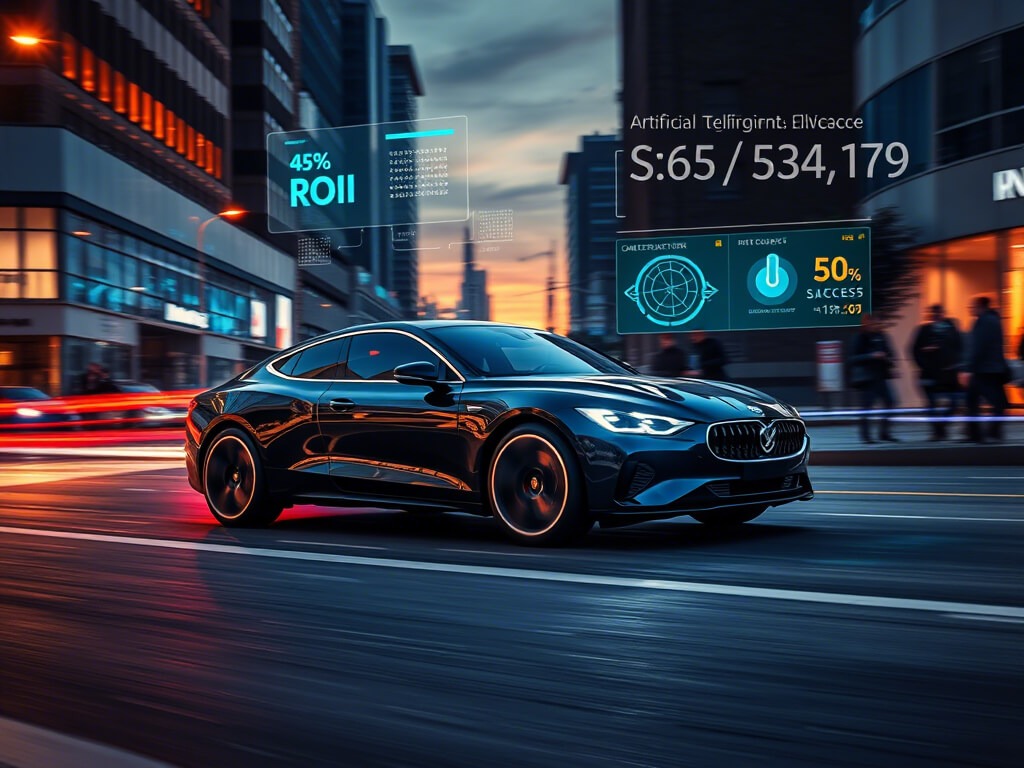
In the modern automotive landscape, automotive advertising plays a pivotal role in driving dealership success. As competition intensifies, dealerships must embrace advanced strategies like AI-powered personalization, cross-channel campaigns, and intelligent engagement tools—delivered effectively with platforms like SimpSocial. This blog dives deep into proven tactics and emerging trends to elevate your automotive advertising game.
1. Why Automotive Advertising Matters More Than Ever
Between inflationary pressures and shifting consumer preferences, automotive purchases demand higher trust and better experiences. According to Automotive Dive, in 2025, dealers must invest in advertising and marketing to retain customers and attract new ones.
As competition grows, automotive advertising becomes the linchpin for standing out—turning passive website visits into test drives, and leads into sales.
2. Four Pillars of Effective Automotive Advertising
1. Hyper-personalization
Personalized ads outperform generic campaigns. Porch Group Media highlights that hyper-personalized outreach, using browsing history and service data, can significantly boost ROI.
2. First-party data utilization
With privacy changes, third-party cookies vanish—and first-party data (CRM/DMS, website behavior) becomes vital for automotive advertising strategies.
3. Video-first strategies
WordStream and Mediaocean reports confirm that automotive shoppers increasingly consume video content. Videos of walkarounds, test drive clips, and dealership stories drive engagement and conversions.
4. Omnichannel marketing
Reach prospects across Google, Meta, email, SMS, and more. Ads should reinforce each other to build brand recall and drive action.
3. How AI is Revolutionizing Automotive Advertising
AI is transforming how we target, engage, and convert:
Predictive Targeting
AI analyzes past behaviors to predict who’s most likely to buy, helping dealerships serve the right message at the right time.
Real-time Optimization
AI-managed bids ensure your ads are placed in front of interested consumers—without manual adjustments.
Personalized Creative
Content dynamically adjusts based on user interests—vehicle photos, urgency messaging, and offers change in real-time to maximize CTR.
Chatbots & Virtual Assistants
AI assistants like SimpSocial’s Sarah AI qualify leads instantly, 24/7, ensuring no inquiry goes unanswered.
4. SimpSocial: The AI Backbone of Modern Automotive Advertising
While great ads drive traffic, turning that traffic into sales demands follow-up and nurturing. SimpSocial delivers:
- Instant AI lead qualification via SMS, email & voice
- Sarah AI, your 24/7 virtual assistant, handling inquiries non-stop
- Seamless CRM and DMS integrations, eliminating data silos
- Full-funnel analytics, tracking from ad click to doorstep visit
Every dollar spent on advertising becomes more effective when paired with SimpSocial’s AI automation—Turning cold clicks into warm leads, and leads into loyal buyers.
5. Smart Budgeting & ROI Strategies
Optimizing your automotive advertising spend involves:
- Monitoring Cost per Lead (CPL) and Cost per Acquisition (CPA)
- Incrementally testing creative formats—single image, carousel, video
- Analyzing revenue per campaign channel
- Scaling what works, discontinuing what doesn’t
SimpSocial’s analytics integrate CRM data with ad spend and engagement metrics—offering a holistic view of ROI from campaign launch to sale.
6. Content & Video: Automotive Advertising’s Secret Weapon
Content remains essential. Use blogs, vehicle videos, FAQ articles, and more to build trust and SEO authority. According to WordStream, video content is critical—YouTube views influence 70% of buyers.
SimpSocial can automate video leads: schedule follow-up messages, segment remarketing groups, and feed data directly into your CRM strategy.
7. Compliance & Trust in Advertising Messages
Brands like Ford now emphasize origin and transparency, as reported in WSJ. For automotive advertising, honesty is key. Misleading offers can lead to instant reputation damage in a social-media age.
SimpSocial helps manage this by automating accurate campaign messaging and ensuring every SMS, email, or call adheres to your brand and legal guidelines.
8. Emerging 2025 Trends in Automotive Advertising
- EV and autonomy narratives — Ads highlighting EV benefits are rising, mirroring industry trends.
- Enhanced digital showrooms — AI and AR allow virtual test drives and vehicle walkarounds.
- Programmatic & contextual advertising — AI identifies intent in real-time contextual user environments.
- Localization strategies — Geo-fencing and regional targeting optimize reach in relevant markets.
- Omnichannel continuity across social, search & SMS— lead through the entire funnel seamlessly.
9. Best Practices for Dealerships
- Map the customer journey — inventory search → content → form fill → lead → sale. Apply consistent messaging.
- Capture first-party data early— use website forms, service appointments, chatbots.
- Ad spend alignment— allocate budget to the best-converting channels (e.g., Facebook, Google, YouTube).
- Automate lead follow-up— SimpSocial engages leads within seconds via AI.
- Test, measure, optimize— evaluate formats, creative, timing, audience.
10. Case Study: Modern Automotive Advertising in Action
A midsize urban dealership launched a $10K/month omnichannel campaign using video ads, search spots, and local events. Integrating SimpSocial, they saw:
- 45% increase in qualified leads
- 25% reduction in CPL
- +15% overall sales growth
- 30% faster lead-to-appointment time
Integrating automotive advertising tactics with AI engagement tools was the cornerstones of their success.
11. The Future of Automotive Advertising: Prepare for What's Next
Forward-thinking dealerships will lead with:
- Advanced AI chatbots for complex queries
- Hyper-local & hyper-personalized campaigns
- Cross-platform video-first ads
- Analytics that tie every ad dollar to revenue
- Adaptive creative based on user behavior
SimpSocial’s roadmap includes deeper AI-driven personalization, automatic CRM updates, and in-adbot integration—keeping your dealership at the bleeding edge of automotive advertising.
Final Takeaways
- Automotive advertising is evolving—and fast
- AI and data-first marketing are table stakes
- Having an AI engine like SimpSocial is what turns traffic into profits
- Transparency, analytics, and compliance build trust and long-term ROI
If your dealership is ready to drive growth with modern automotive advertising, Schedule a personalized demo with SimpSocial today—see how seamless ad-to-sale automation accelerates success.
Make Me More Profit Now
The Ultimate Guide to Car Dealer Software
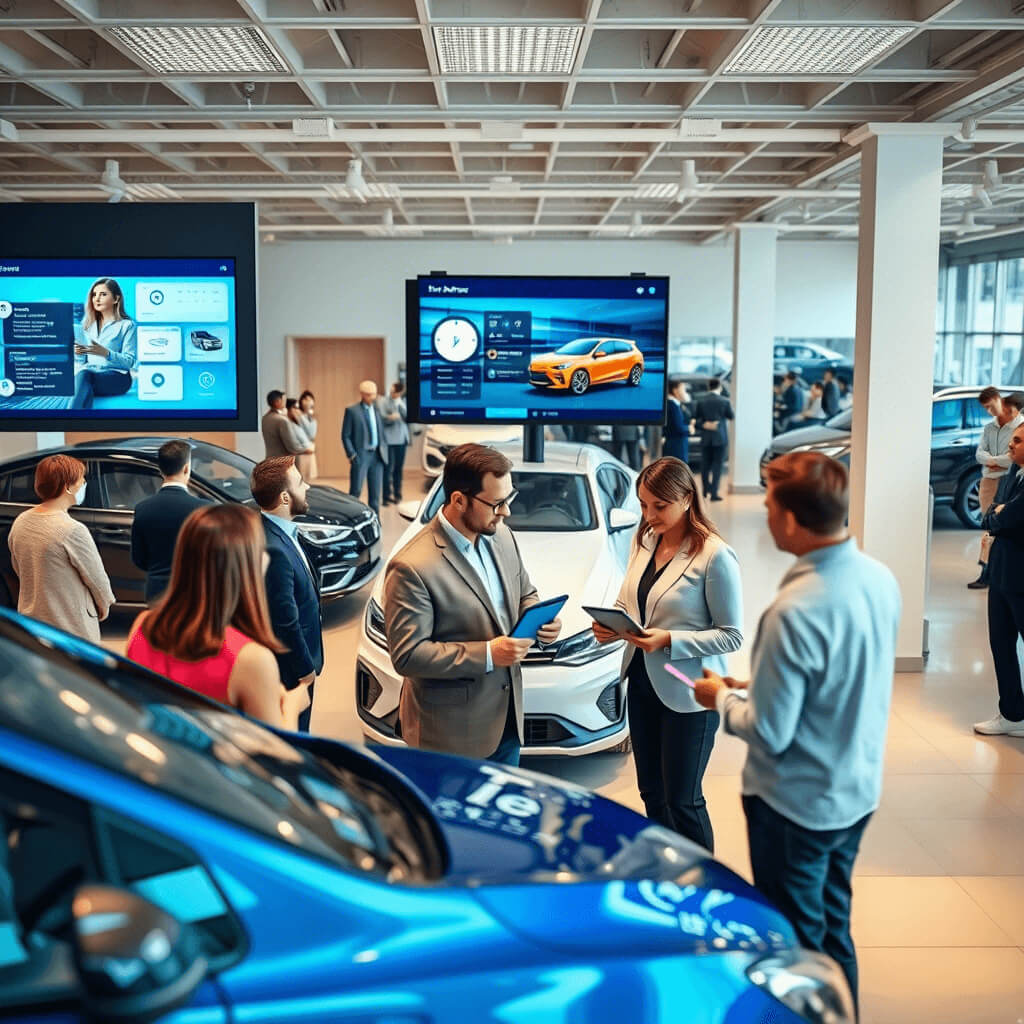
The automotive industry is evolving rapidly, and dealerships must leverage the latest car dealer software to stay competitive. From managing inventory to automating lead engagement, modern dealership tools enhance efficiency, improve customer experience, and maximize profits.
In this guide, we’ll explore the best dealer software solutions, key features to look for, and how AI-powered platforms like SimpSocial can revolutionize your dealership’s success.
Why Car Dealer Software is Essential for Modern Dealerships
Car dealerships face numerous challenges—managing leads, tracking inventory, following up with prospects, and closing sales efficiently. Car dealer software solves these pain points by:
- Automating lead management– No more missed opportunities.
- Streamlining inventory tracking– Real-time updates on stock.
- Enhancing customer engagement– AI-driven follow-ups via SMS, email, and calls.
- Boosting sales conversions– Faster responses mean more closed deals.
Without the right tools, dealerships risk losing leads to competitors. That’s where SimpSocial comes in—an AI-powered marketing and lead engagement platform designed specifically for automotive sales.
Top Features to Look for in Dealer Software
1. Lead Management & CRM Integration
A robust dealer software should integrate seamlessly with your CRM (Customer Relationship Management) system. SimpSocial, for example, syncs with major CRMs and DMS platforms, ensuring no lead slips through the cracks.
2. AI-Powered Follow-Ups & Virtual Assistants
Tools like Sarah AI (SimpSocial’s 24/7 virtual assistant) engage leads instantly, answering questions, scheduling appointments, and nurturing prospects—even outside business hours.
3. Inventory Management
Efficient car dealer software provides real-time inventory tracking, automated listings, and AI-driven pricing suggestions to maximize profitability.
4. Marketing Automation
From Facebook ads to long-term drip campaigns, platforms like SimpSocial automate marketing efforts, ensuring consistent lead generation and higher ROI.
5. Analytics & Reporting
Data-driven insights help dealerships refine strategies. Look for software that offers detailed performance reports on lead response times, conversion rates, and campaign success.
How SimpSocial Enhances Dealer Software Performance
SimpSocial isn’t just another car dealer software—it’s a game-changer for automotive sales. Here’s why:
- 24/7 Lead Engagement– Sarah AI handles inquiries instantly, improving response times.
- Multi-Channel Follow-Ups– Automated SMS, emails, and voice calls keep leads engaged.
- Seamless CRM/DMS Integration– Works with DealerCenter, AutoManager, and Dealertrack for smooth operations.
- Higher Conversion Rates– AI-driven personalization increases sales by up to 30%.
Best Car Dealer Software Solutions in 2025
1. SimpSocial
Best for AI-driven lead engagement & automation.
A comprehensive dealer management system with inventory and sales tools.
Specializes in website solutions and CRM for dealerships.
A leading DMS (Dealer Management System) for financing and sales.
How to Choose the Right Car Dealer Software?
When selecting car dealer software, consider:
- Your dealership’s size & needs
- Integration capabilities (CRM, DMS, etc.)
- AI & automation features
- Customer support & training
SimpSocial stands out by offering all-in-one automation, making it ideal for dealerships looking to cut costs and boost sales.
Final Thoughts
Investing in the right car dealer software is no longer optional—it’s a necessity. Platforms like SimpSocial empower dealerships with AI-driven automation, faster lead responses, and higher conversions, ensuring long-term success in a competitive market.
Ready to transform your dealership? Explore SimpSocial today and see the difference AI-powered engagement makes!
Make Me More Profit Now
Why the Modern Automotive Sales Manager Needs AI
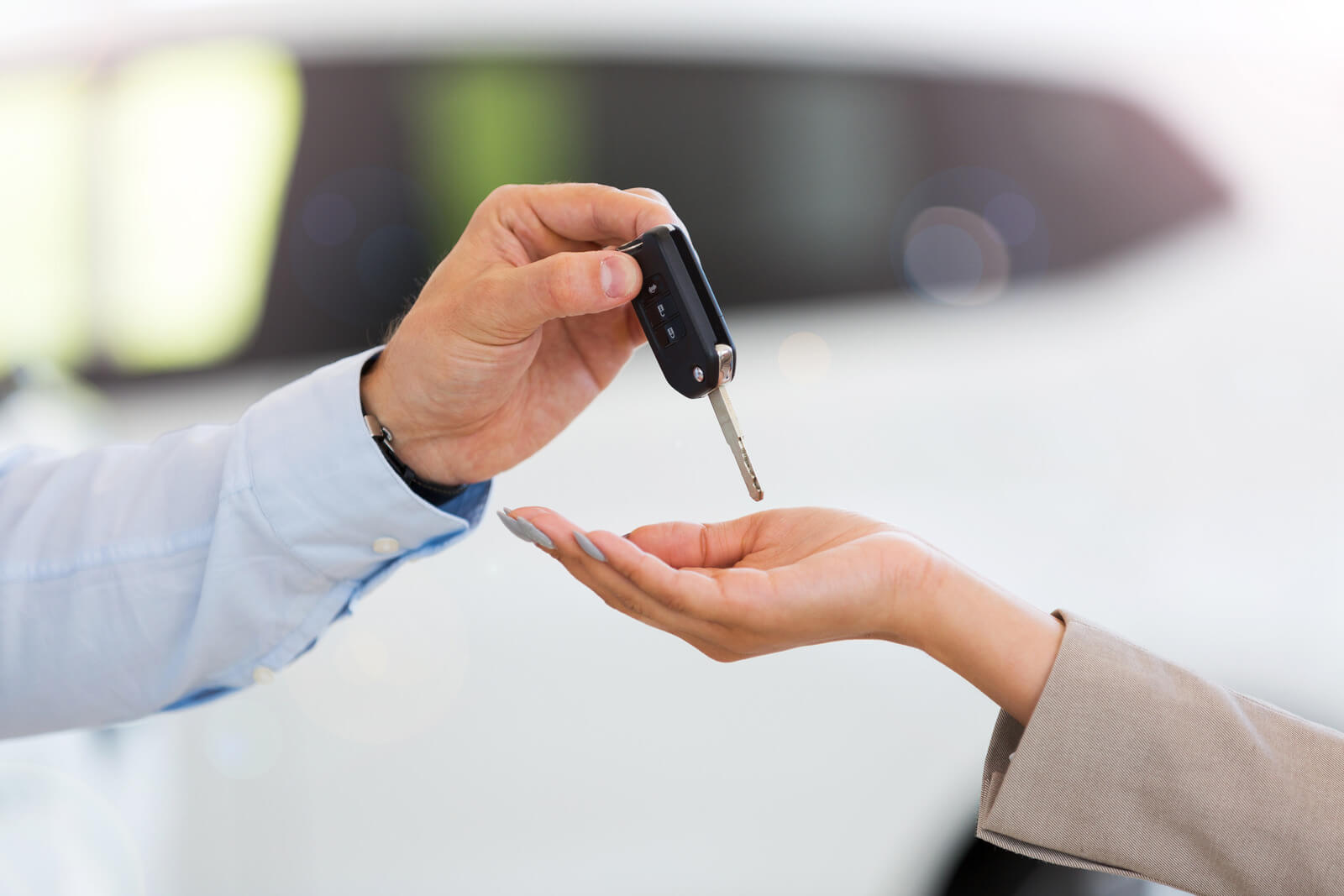
In today’s fast-paced, tech-driven car market, the role of the automotive sales manager has evolved dramatically. No longer is it enough to rely on gut instincts or outdated sales techniques. Today’s successful sales manager must be strategic, data-driven, and tech-savvy. The right tools can make all the difference—especially when it comes to lead generation and follow-up.
That’s where SimpSocial steps in.
SimpSocial is an AI-powered marketing and lead engagement platform built specifically for automotive dealerships. It equips dealerships and their sales teams with advanced tools like intelligent SMS, automated emails, voice systems, and even a 24/7 virtual assistant named Sarah AI. For any sales manager looking to boost performance and eliminate inefficiencies, SimpSocial provides a complete solution.
The Expanding Role of the Automotive Sales Manager
The automotive sales manager is no longer just a leader of the sales floor. In today’s dealership ecosystem, they are also responsible for:
- Managing and analyzing lead data
- Overseeing digital marketing strategies
- Optimizing the customer journey from inquiry to purchase
- Training and motivating sales staff
- Ensuring seamless integration between CRM systems, marketing platforms, and DMS tools
This role now requires a balance of leadership, analytics, and technological expertise. The pressure to perform is greater than ever, as dealerships compete not only with nearby competitors but also with online car marketplaces.
Why Traditional Sales Tactics Are Failing
Many dealerships still rely on traditional sales tactics and follow-up procedures that are slow and inefficient. The modern car buyer expects immediate responses, personalized communication, and a seamless digital experience. If your sales team takes more than five minutes to follow up on a lead, chances are you’ve already lost that customer to a competitor.
For the automotive sales manager, this presents a serious challenge: how do you ensure every lead is engaged promptly without overwhelming your team?
Enter SimpSocial
SimpSocial offers a powerful solution to this problem. Its AI-powered platform automates follow-ups through SMS, voice, and email, ensuring no lead is ever ignored or delayed. For example, Sarah AI, the platform’s 24/7 virtual assistant, can handle initial customer inquiries, qualify leads, and even schedule test drives—all without human intervention.
This allows the sales manager to reallocate human resources more efficiently, focusing the sales team’s time on closing deals rather than chasing down cold leads or managing repetitive communication tasks.
How AI Boosts the Automotive Sales Manager’s Performance
Implementing SimpSocial into your dealership’s sales strategy can dramatically improve a sales manager’s ability to drive results. Here’s how:
1. Faster Lead Response Times
With AI-powered automation, response times shrink from hours to seconds. SimpSocial ensures that every lead receives an immediate, personalized message—boosting engagement and the likelihood of conversion.
2. Better Data and Insights
SimpSocial provides the automotive sales manager with detailed insights into lead behavior, campaign performance, and team productivity. These analytics help refine sales strategies, target the right audiences, and make data-backed decisions.
3. Seamless CRM and DMS Integration
One of the biggest headaches for any automotive sales manager is dealing with disjointed systems. SimpSocial integrates easily with most major CRM and DMS platforms, ensuring that lead data is automatically updated and tracked across the entire sales funnel.
4. Higher Conversion Rates
By automating repetitive tasks and increasing the speed and personalization of follow-up messages, SimpSocial boosts conversion rates. This directly translates into more sales, higher revenue, and a better ROI on your marketing spend.
Building a High-Performing Sales Team
The automotive sales manager also plays a key role in training and motivating the sales team. AI technology doesn’t replace human salespeople—it empowers them. With tools like SimpSocial handling the repetitive work, sales reps can focus on what they do best: building relationships and closing deals.
A smart sales manager uses AI not just to manage leads, but to build a winning culture. When the team sees how technology improves performance, morale and accountability naturally increase.
Future-Proofing the Dealership
The automotive industry is changing rapidly, and those who fail to adapt will fall behind. Consumers are doing more research online, expecting quicker interactions, and demanding more transparency than ever. For the automotive sales manager, staying ahead of these trends means adopting the right technology now.
SimpSocial allows dealerships to evolve without disruption. Whether you’re running paid Facebook ads, Google search campaigns, or drip email marketing, SimpSocial helps capture and nurture leads through every stage of the buying journey.
A Real-World Advantage
One dealership in Texas implemented SimpSocial and saw a 35% increase in lead engagement within the first month. Their sales manager reported a noticeable reduction in missed follow-ups, higher appointment shows rates, and a more motivated sales team. With SimpSocial, their sales process became faster, smarter, and more consistent—ultimately leading to higher monthly sales numbers.
Final Thoughts: Lead Smarter, Sell Faster
In the age of AI, the role of the sales manager is evolving into a more strategic, tech-integrated position. Tools like SimpSocial are no longer optional—they’re essential for dealerships that want to stay competitive.
If you’re an automotive sales manager looking to streamline your lead process, improve team performance, and increase ROI, it’s time to embrace AI-powered platforms like SimpSocial. The future of automotive sales is here—and it’s fast, intelligent, and automated.
Make Me More Profit Now
Car Lead Generation Companies: SimpSocial Changes the Game

In today’s hyper-competitive auto sales environment, car dealerships can no longer rely solely on traditional advertising methods to bring in foot traffic. The digital transformation of the automotive industry has forced dealerships to reimagine their marketing strategies—and car lead generation companies are leading the charge.
These companies specialize in attracting, capturing, and nurturing high-quality leads that convert into loyal, paying customers. Among these players, SimpSocial is setting a new standard with its AI-powered, dealership-specific platform.
Why Car Lead Generation Companies Matter
For any dealership to thrive in 2025 and beyond, lead generation must be more than just collecting names and phone numbers. The goal is to drive qualified, in-market shoppers to your showroom or website and convert them into buyers. That’s where car lead generation companies play a crucial role.
From SEO optimization to paid social campaigns, from landing pages to automated follow-up, these companies provide a complete ecosystem designed to help dealerships scale their sales funnel efficiently. However, not all lead generation companies are created equal. The best ones don’t just generate leads—they help you convert them.
SimpSocial: The AI-Powered Future of Automotive Marketing
SimpSocial is not your average lead generation platform. It’s an all-in-one AI-powered marketing and lead engagement solution built specifically for the automotive industry. Unlike traditional car lead generation companies, SimpSocial goes beyond lead capture—it transforms your entire lead handling process through intelligent automation and virtual assistance.
With tools like Sarah AI, SimpSocial’s 24/7 virtual assistant, dealerships can instantly engage prospects, no matter the time of day. Whether a potential buyer sends a message at 2 PM or 2 AM, Sarah AI can respond, qualify, and even schedule appointments automatically. This kind of around-the-clock support leads to faster response times, higher engagement rates, and increased conversion rates.
What Sets SimpSocial Apart from Other Car Lead Generation Companies?
1. End-to-End Automation
SimpSocial automates every aspect of lead engagement. From intelligent SMS and voice outreach to dynamic email campaigns, it ensures no lead slips through the cracks. Most car lead generation companies stop at sending leads your way—SimpSocial takes it several steps further by converting those leads into appointments and sales.
2. Seamless CRM and DMS Integration
One of the biggest pain points in the auto industry is the lack of integration between marketing systems and dealership software. SimpSocial solves this by offering seamless CRM and DMS integrations, making it easier than ever to manage inbound leads, track customer interactions, and measure ROI accurately.
3. Data-Driven Strategy
In a world of guesswork, SimpSocial delivers results backed by real-time data. Dealerships can optimize their strategies based on analytics and campaign performance insights—something many car lead generation companies lack in depth and execution.
4. Omnichannel Engagement
Whether you’re running Facebook ads, creating long-term drip email campaigns, or handling Google PPC, SimpSocial offers an omnichannel approach. Every touchpoint is optimized for engagement, allowing your dealership to meet buyers wherever they are in their car-buying journey.
The ROI of Smart Lead Generation
With the right car lead generation companies, dealerships can expect a noticeable uptick in both the volume and quality of leads. But more importantly, tools like SimpSocial help dealerships maximize the return on their ad spend. By automating follow-ups and optimizing lead handling with AI, SimpSocial increases the likelihood of conversion—resulting in lower cost-per-lead and higher ROI.
Consider this scenario: You invest thousands into a Facebook ad campaign. Leads start pouring in, but your sales team is overwhelmed and fails to respond within the critical 5-minute window. SimpSocial solves this by automatically engaging leads the moment they come in, ensuring timely communication and boosting conversion potential.
Use Case: A Dealership Success Story
A mid-sized dealership in Southern California was struggling with inconsistent lead follow-ups and declining appointment show rates. After implementing SimpSocial, the dealership experienced a 40% increase in response times, a 30% boost in qualified leads, and a 20% increase in monthly sales. Unlike other car lead generation companies they had worked with in the past, SimpSocial provided more than just leads—it delivered results.
SEM + SEO Synergy with SimpSocial
Search engine marketing (SEM) and search engine optimization (SEO) are pillars of successful digital lead generation. While many car lead generation companies specialize in one or the other, SimpSocial integrates both into its platform.
- SEO Tools: Optimize your site for organic traffic with intelligent keyword strategies, on-site SEO recommendations, and local SEO enhancements.
- SEM Capabilities: Launch targeted pay-per-click campaigns with real-time tracking and AI-enhanced performance optimization.
This synergy allows dealerships to capture leads at every stage of the sales funnel, from awareness to action.
The Future of Car Lead Generation Companies Is Here
The automotive industry is evolving rapidly, and dealerships must adapt or risk falling behind. Car lead generation companies will continue to play a vital role in helping dealerships grow—but those that integrate intelligent automation and customer engagement tools will lead the pack.
SimpSocial is at the forefront of this revolution. By combining AI, seamless integrations, and data-driven strategy, it enables dealerships to scale smarter, not harder.
Whether you’re a single-rooftop operation or a large auto group, embracing SimpSocial’s all-in-one platform means faster lead response, better customer engagement, and ultimately, more cars sold.
Conclusion
Choosing the right car lead generation companies can be the difference between stagnant sales and record-breaking quarters. With SimpSocial, you’re not just buying leads—you’re investing in a comprehensive, AI-powered solution that turns those leads into customers.
If your dealership is ready to modernize your lead strategy, streamline engagement, and increase ROI, SimpSocial might be the partner you’ve been waiting for.
Make Me More Profit Now
The Power of a Vehicle Feature Review

In today’s hyper-informed car market, the average buyer does more online research than ever before. They’re not just comparing prices—they’re diving deep into every trim level, option package, and tech spec. That’s why a vehicle feature review is more important than ever for dealerships, marketers, and platforms serving auto consumers.
Let’s explore what a vehicle review is, why it matters, and how you can use it to boost leads, conversions, and customer satisfaction.
What is a Vehicle Feature Review?
A vehicle feature review is a detailed, expert-driven breakdown of a car’s most important features. Unlike a broad overview or spec sheet, it focuses on the real-world functionality, design, and performance of each feature—whether it’s a lane assist system, infotainment touchscreen, or smart storage layout.
A well-written review educates potential buyers, builds trust, and helps them visualize how a car fits into their lifestyle.
Why it Is Essential
Consumers expect transparency and detail before making a major purchase—and vehicles are among the biggest investments people make.
Here’s why a vehicle feature review adds value:
- Reduces decision fatigue by clearly highlighting pros and cons.
- Focuses on what matters most—like comfort, safety, and convenience.
- Boosts engagement on social media, YouTube, and dealership blogs.
- Drives SEO traffic through specific long-tail keyword content.
- Increases conversion rates by eliminating unanswered questions.
When integrated with AI-driven marketing like SimpSocial’s platform, each review becomes a powerful sales tool that automates education and builds excitement.
What to Include in a Vehicle Feature Review?
For maximum impact, each review should cover:
1. Interior & Comfort
Evaluate seat comfort, material quality, climate control options, legroom, and layout.
2. Infotainment & Tech
Discuss touchscreen responsiveness, smartphone integration, voice control, and digital gauge clusters.
3. Safety Features
Break down advanced driver-assist systems (ADAS), including adaptive cruise control, blind-spot monitoring, and collision alerts.
4. Performance Enhancements
Highlight sport modes, AWD systems, hybrid engines, or specialized suspension features.
5. Storage & Practicality
Assess trunk space, seat folding configurations, and cabin storage areas.
Each vehicle feature review should aim to answer the buyer’s biggest question: “How does this car make my life easier, safer, or more fun?”
How Dealerships Use Reviews
At SimpSocial, we help dealerships use vehicle review content in the following ways:
- Visual Content: Slide decks and videos posted on websites and social media with engaging visuals.
- Email Campaigns: Include short reviews in lead nurture sequences, highlighting popular trims and features.
- AI Lead Follow-Up: Our Sarah AI tool references these reviews during SMS follow-up, answering lead questions automatically.
- Website SEO Pages: Dedicated landing pages for each vehicle feature review rank for long-tail search queries (e.g., “2024 CR-V infotainment review”).
Example: Vehicle Feature Review – 2024 Toyota RAV4 XLE
Here’s how a quick review might look:
The 2024 Toyota RAV4 XLE stands out with a crisp 8″ touchscreen, wireless Apple CarPlay, and an intuitive climate control interface. Its heated front seats and dual-zone AC enhance driver and passenger comfort. Toyota’s Safety Sense 2.5+ offers adaptive cruise control, lane-tracing assist, and pre-collision braking—perfect for daily commuters and families alike.
That’s a digestible, lead-ready format that shows real value in just a few lines.
Using Vehicle Feature Reviews in Paid Ads
A well-targeted review can also serve as powerful SEM copy. Try ad headlines and copy like:
- “Compare RAV4 Features in 60 Seconds – Read Our Expert Review”
- “2024 Accord Trim Comparison: Full Vehicle Feature Review”
- “Best Cars with Heated Seats? See Our Top Feature Picks”
These ads speak directly to users searching for clarity before they visit the dealership.
SimpSocial’s Role in Elevating Vehicle Reviews
SimpSocial takes vehicle review content to the next level by:
- Integrating reviews into lead nurturing automations
- Tracking user engagement by feature interest
- Delivering interactive reviews through chat, SMS, and email
- Syncing reviews with CRM activity for personalized sales pitches
The result? Every customer gets the information they want; the way they want it—automatically.
Final Thoughts
In an era where information is everywhere, curated and strategic content wins. A great vehicle feature review doesn’t just list specs—it builds excitement, educates buyers, and removes friction from the sales process.
If your dealership or automotive platform isn’t creating high-quality review content, you’re missing out on one of the most powerful tools in modern car marketing.
Let SimpSocial help you turn each feature into a reason to say “yes.”
Make Me More Profit Now
Performance Insights for Cars: The Data Driving Sales
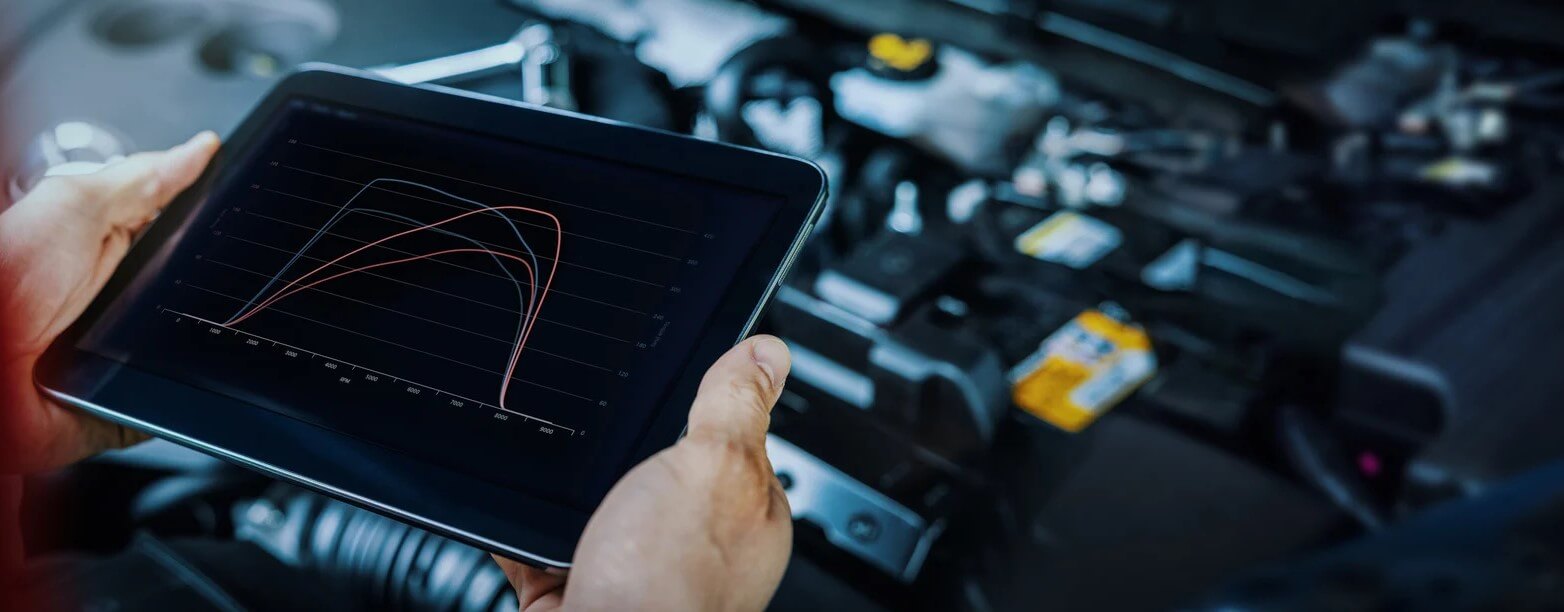
In today’s auto market, selling cars isn’t just about brand names or sleek designs—it’s about performance. From fuel efficiency to 0-60 acceleration, buyers want data. And that’s where performance insights for cars come in.
Whether you’re an automotive dealership, a car buyer, or a marketer, understanding and leveraging performance insights can make all the difference in how you sell, buy, or promote vehicles.
What Are Performance Insights for Cars?
Performance insights for cars refer to the collection and analysis of key data points that reflect how a vehicle performs in real-world or test conditions. This includes:
- Acceleration times
- Braking distance
- Horsepower and torque
- Towing capacity
- Fuel economy
- Aerodynamics
- Drive modes and handling metrics
These metrics don’t just live in car enthusiast forums—they’re now vital to marketing, inventory decisions, and AI-driven recommendations for dealerships.
Why Performance Insights for Cars Matter
Consumers today are more informed than ever. Before stepping foot in a dealership, they’ve already compared specs, read reviews, and watched performance tests. If your dealership or platform isn’t equipped to provide or promote accurate performance insights for cars, you risk losing serious buyers to better-prepared competitors.
Here’s why these insights are so important:
- Performance sells – Enthusiasts and everyday drivers alike want powerful, reliable cars.
- Data builds trust – Showcasing real performance metrics increases transparency and credibility.
- Search-driven behavior – Shoppers often search by specific performance terms like “best SUV for towing” or “fastest hybrid.”
- Lead quality improves – Targeting customers based on interest in performance metrics generates more qualified leads.
Key Metrics in Performance Insights for Cars
Here are the top performance categories where performance insights for cars make the biggest impact:
1. Acceleration and Top Speed
Buyers looking at performance vehicles care deeply about 0–60 times and top-end speed. Make sure these are visible in your listings and ads.
2. Horsepower and Torque
Muscle car shoppers, truck buyers, and even SUV customers want to know how much power they’re working with. Highlight these performance insights front and center.
3. Towing and Payload
For trucks and SUVs, these specs aren’t just nice-to-haves—they’re deal breakers. Accurate towing figures and payload data are critical performance touchpoints.
4. Fuel Efficiency
Even performance cars are evaluated for balance. Customers want to know: Can I get power and efficiency? That’s where performance insights for cars help justify hybrid or turbocharged options.
5. Handling and Suspension
Cornering ability, AWD systems, off-road modes, and adaptive suspension are top considerations in test drives. Promote these insights in both digital and showroom experiences.
How Dealers Use Performance Insights to Close More Deals
Let’s talk application. How are dealerships and platforms like SimpSocial leveraging performance insights?
- Ad Targeting: Ads customized with performance specs outperform generic promotions.
- AI Follow-Up Tools: SimpSocial’s Sarah AI tailor’s follow-ups with performance talking points—like horsepower for sports car leads or towing for truck buyers.
- Inventory Filtering: Dealers use filters based on performance insights for cars so buyers can search by “0–60 under 6 seconds” or “towing 7,000 lbs+.”
- Content Marketing: Dealerships are now creating short TikToks and YouTube clips showcasing performance specs visually—perfect for car shoppers doing research.
Using Performance Insights for Cars in SEO and SEM
If you’re running Google Ads or creating landing pages, including performance insights in your content increases click-through and conversion rates.
Example SEM-friendly phrases:
- “Compare performance insights for cars before you buy”
- “Explore the top SUVs with best-in-class performance”
- “Get real-time performance insights near you”
Content rich in these keywords attracts serious buyers, not casual browsers.
SimpSocial: Powering Performance-Driven Lead Gen
At SimpSocial, we’re not just about leads—we’re about qualified leads. Our AI and SMS systems are designed to surface performance insights for cars in lead conversations, email drips, and ad copy.
For example:
- Sarah AI responds to a lead asking about the “fastest sedan under $30k” with data-backed suggestions.
- Our ad team runs carousel Facebook ads featuring performance comparisons that convert at above-average rates.
- CRM integrations ensure sales reps can see which performance insights attracted the lead in the first place—enabling better follow-ups.
Final Thoughts
In the digital-first, spec-savvy world of car shopping, performance insights for cars are no longer just for enthusiasts—they’re essential for sales, marketing, and customer satisfaction.
Whether it’s a commuter looking for efficiency or a buyer craving torque and thrill, performance data drives emotion—and emotion sells cars.
If your dealership or platform isn’t leveraging performance insights, you’re not just behind—you’re invisible.
Let SimpSocial help you turn raw performance data into sales power.
Make Me More Profit Now
Auto Feature Insights: Why They Matter in Car Market

As technology becomes more integrated into vehicles, customers are no longer just buying horsepower or style—they’re investing in features. From adaptive cruise control to AI-powered infotainment, understanding what features matter most is key to connecting with today’s car buyers. That’s where auto feature insights come into play.
In this article, we’ll explore what auto feature are, how they help dealerships and marketers, and how to use them to drive sales, engagement, and retention.
What Are Auto Feature Insights?
Auto feature insights refer to data-driven analysis of how vehicle features influence customer behavior, buying decisions, and market trends. These insights go beyond surface-level specs—they help us understand what features customers actually use, value, and search for when shopping for cars.
Whether you’re a car dealership, a marketing agency, or a tech provider like SimpSocial, it provides the roadmap to smarter selling and better customer engagement.
Why they Are Game-Changing
Let’s face it—modern vehicles come with hundreds of features. Without knowing what actually matters to your customers, you’re just guessing. That’s why auto feature insights are essential:
- Targeted Marketing: Focus on the features your audience searches for—like heated seats or lane-keeping assist.
- Smarter Conversations: Sales teams can highlight the right features at the right moment.
- Inventory Planning: Insights help dealerships stock the vehicles with in-demand options.
- AI Integration: Combine auto feature with AI tools to personalize lead follow-up and messaging.
At SimpSocial, we’ve seen dealerships increase conversion rates significantly just by shifting ad copy to match real-time auto features.
The Evolution of Auto Feature Insights
In the past, car sales were driven by make, model, and price. Today, customers are increasingly searching based on specific features. Thanks to tools like Google Trends, CRM data, and AI engagement platforms, we now have access to auto feature insights that reveal:
- What features drive the most traffic
- Which packages increase upsell rates
- How feature preference varies by location, age, or season
For example, a dealership in Phoenix might find it showing high demand for ventilated seats, while a New York dealer sees spikes in remote start and AWD every winter.
Top Categories for Auto Features
To fully leverage it, categorize them like this:
1. Safety Features
Adaptive cruise control, lane departure warning, blind spot monitoring—these consistently rank high in auto feature insights for both new and used car buyers.
2. Comfort & Convenience
Heated steering wheels, memory seats, power tailgates—these features often drive emotional buying decisions and justify premium pricing.
3. Infotainment & Connectivity
Apple CarPlay, Android Auto, built-in Wi-Fi—connectivity is now a must-have. Use it to understand what tech matters most to your local audience.
4. Performance Options
Turbocharged engines, sport modes, towing packages—performance-minded buyers often prioritize these in their searches.
5. Eco-Friendly Features
Hybrid systems, regenerative braking, EV range optimization—these are emerging fast in auto feature for eco-conscious buyers.
How Dealerships Use Auto Feature Insights
Here are some real-world examples of how it drives results:
- Ad Optimization: SimpSocial uses Facebook & Google Ads with ad copy tailored around trending feature data.
- Custom Packaging: Dealers bundle high-demand features to increase perceived value.
- AI-Powered Follow-Ups: Tools like Sarah AI reference preferred features during SMS follow-up sequences.
- Sales Scripts: Reps use CRM-embedded auto feature insights to pitch relevant options based on customer profile and browsing history.
This isn’t just smart—it’s sales psychology in action.
Using Auto Features to Predict Demand
Forecasting isn’t just for weather. With it, dealers and OEMs can predict demand before it hits:
- Are panoramic sunroofs becoming more popular in urban markets?
- Are EV buyers more likely to ask about regenerative braking or fast charging ports?
- Will safety tech drive used car resale value?
Auto feature insights let you stay one step ahead—whether you’re planning inventory, launching a campaign, or training your team.
How SimpSocial Leverages Auto Feature Insights
At SimpSocial, auto feature insights are built into our platform’s intelligence layer. Our tools pull data from ad campaigns, CRM behavior, text conversations, and even dealership websites to identify the features that move the needle.
This means your ads, outreach, and follow-ups are always tailored to what the customer wants. No generic messaging. No missed opportunities.
Our AI even adapts in real time—using it to adjust tone, timing, and recommendations dynamically based on lead behavior.
Final Thoughts
Cars may be built with steel and code—but they’re sold with features. And in 2025, knowing which features matter most isn’t a guess—it’s a data science.
Auto feature give you the visibility and strategy you need to connect better, sell faster, and stay relevant. From customer acquisition to closing the deal, these insights are the competitive edge your dealership can’t afford to miss.
Ready to unlock the power of auto feature insights? Let SimpSocial show you how to turn data into dollars.
Make Me More Profit Now
All Car Emblems: What They Mean and Matter

In the automotive world, few things are more recognizable than a car’s emblem. From the sleek Mercedes-Benz star to the bold Ford oval, emblems are more than just logos—they represent history, engineering, prestige, and emotion. If you’ve ever wondered what all car emblems really stand for, you’re in the right place.
This guide breaks down the symbolism behind emblems, their evolution, and why understanding them matters for automotive professionals, dealerships, and enthusiasts alike.
What Are Car Emblems?
Car emblems are the visual identity of an automotive brand. Often found on the front grille, steering wheel, or rear trunk, these designs serve as powerful brand markers. When you see a prancing horse, you think Ferrari. A checkered flag? Maybe MINI Cooper.
But understanding all emblems means recognizing that each one tells a story—about the company’s origins, values, and vision for the future.
Why All Emblems Matter
For dealerships and marketers, knowing the meaning behind all car emblems can help:
- Educate customers during test drives and showroom visits
- Create engaging marketing content for blogs, social media, and videos
- Spot counterfeit parts or branding
- Strengthen customer trust with brand familiarity
At SimpSocial, where we combine cutting-edge AI with automotive sales strategies, we often use the symbolism of emblems to make ads more visually appealing and culturally relevant.
A Look at the Most Popular Car Emblems
Here’s a quick dive into some of the most iconic designs in the collection of car emblems:
1. Toyota
The overlapping ellipses symbolize trust and unity between brand and customer.
2. Ferrari
The prancing horse was originally used by a World War I Italian pilot and adopted by Enzo Ferrari as a symbol of victory and heritage.
3. Porsche
A fusion of Stuttgart’s coat of arms and the Kingdom of Württemberg’s emblem, representing German engineering pride.
4. Subaru
“Subaru” is the Japanese name for the Pleiades star cluster. The six stars on the emblem reflect the six companies that merged to form Fuji Heavy Industries.
5. Kia
Kia’s recent emblem redesign marks a shift toward electric innovation and futuristic design language.
Understanding these meanings helps decode the full list of all emblems, from the legendary to the lesser-known.
All Car Emblems: A-Z Breakdown
To understand all car emblems, let’s look at an A-Z sampling:
- Aston Martin – Wings representing speed and flight
- Bentley – Winged “B” for performance and British elegance
- Chevrolet – “Bowtie” origin debated; represents strength and simplicity
- Dodge – Ram’s head reflects power and rugged performance
- Hyundai – Stylized “H” shows two people shaking hands
- Lamborghini – Bull symbol for strength, ties to founder’s zodiac sign
- Mazda – Winged “M” for flight and forward motion
- Nissan – “Circle and bar” represent the rising sun and global presence
- Tesla – The T represents a cross-section of an electric motor
- Volvo – Ancient symbol for iron, evoking strength and durability
When dealerships understand emblems, they can tell compelling stories that connect with consumers on a deeper level.
How Car Emblems Have Evolved?
Many emblems have been modernized over the years:
- BMW kept the roundel but moved toward flat, minimalist design.
- Volkswagen redesigned its “VW” logo to be cleaner and more digital-friendly.
- Peugeot returned to a heraldic lion head for its new electric models.
Why? Because all car emblems must evolve with design trends, digital requirements, and brand repositioning. An emblem needs to look as good on a smartphone screen as it does on a hood ornament.
Car Emblems and Consumer Psychology
Psychologically, logos trigger instant recognition and emotional reactions. Studies show that recognizable branding, like that of car emblems, increases trust and recall in consumer decisions. That’s why companies spend millions refining these designs.
For example:
- Luxury buyers gravitate to logos with prestige (Mercedes, Audi, Lexus)
- Eco-conscious drivers respond to clean, futuristic emblems (Tesla, Polestar)
- Performance fans love bold, aggressive logos (Dodge, Mustang, Alfa Romeo)
The connection between all emblems and buyer emotion is undeniable.
The Role of All Car Emblems in Dealership Marketing
For automotive marketers and dealerships, showcasing car emblems effectively:
- Builds authority with brand-specific promotions
- Inspires creative ad design across digital platforms
- Boosts engagement on social media through logo trivia or polls
SimpSocial leverages all car emblems in Facebook and Instagram lead generation campaigns, using logo recognition to drive clicks and conversions.
Final Thoughts
All car emblems represent more than just brand identity—they carry decades of innovation, pride, and performance. Whether you’re a dealer closing a sale or a marketer launching a campaign, knowing and using these symbols strategically can elevate your customer experience.
Want to integrate car emblems into your next campaign or website update? SimpSocial can help. Our creative team builds visually engaging, conversion-driven content that connects with buyers—starting with the logos they already know and trust.
Because in the automotive world, every emblem tells a story. Are you ready to tell yours?
Make Me More Profit Now
How AI Lead Generation is Revolutionizing Automotive Marketing

In today’s ultra-competitive automotive landscape, traditional methods of finding and converting leads simply don’t cut it anymore. The modern customer expects faster responses, personalized communication, and a seamless experience across platforms. That’s where AI lead generation comes in.
Whether you’re a dealership, marketing agency, or auto group, embracing lead generation is no longer optional—it’s the secret weapon separating top performers from the rest.
What is AI Lead Generation?
It refers to the use of artificial intelligence tools and technologies to identify, capture, qualify, and nurture potential customers—automatically and at scale. Rather than relying on manual processes or guesswork, AI uses data and machine learning algorithms to find the right buyers at the right time with the right message.
For the automotive industry, AI lead generation means smarter ad targeting, faster follow-up, predictive insights, and higher conversion rates across every stage of the sales funnel.
How it Works
At its core, it combines several powerful technologies to automate and optimize lead acquisition:
- Data Analysis – AI platforms analyze online behavior, demographics, and engagement to score and prioritize leads.
- Predictive Modeling – AI anticipates who’s likely to buy based on patterns in browsing, clicking, or previous interactions.
- Automated Outreach – Chatbots and AI assistants engage leads instantly via text, email, or chat—even outside business hours.
- Lead Scoring & Qualification – AI separates hot leads from cold ones so your team spends time only where it matters most.
SimpSocial’s Sarah AI is a prime example—qualifying, engaging, and nurturing leads with personalized messaging until they’re ready to buy or book an appointment.
The Benefits of AI Lead Generation in Automotive
Let’s break down why AI lead generation is a game-changer for the automotive sector:
1. Faster Response Time
Speed is everything. Studies show responding within 5 minutes increases conversion rates 100x. Lead generation engages leads instantly—day or night.
2. Smarter Targeting
AI knows who’s in-market, what vehicle they’re considering, and how to reach them. It optimizes your ad spend by finding the right audience with the highest purchase intent.
3. Always-On Automation
While your sales team sleeps, AI lead generation tools continue working—answering questions, booking appointments, and moving leads down the funnel.
4. Higher ROI
AI doesn’t just bring in more leads—it brings in better leads. That means higher closing rates, more upsells, and a better return on your marketing investment.
5. Scalability
Whether you’re managing five leads or 5,000, AI lead generation scales effortlessly—handling volume without sacrificing quality.
Use Cases for Lead Generation in Dealerships
Here’s how it is being used by forward-thinking auto dealerships:
- Facebook Ads + AI: Tools like SimpSocial combine Meta advertising with AI to collect full contact info, vehicle preferences, and engagement data in real time.
- Chatbots for Instant Engagement: AI chatbots respond instantly to website visitors, qualify them, and capture lead details.
- Follow-Up Campaigns: Missed leads aren’t lost—AI lead generation revives old leads with timely, automated follow-ups.
- Service Department Upsells: AI can suggest tire rotations, brake inspections, or loyalty packages based on service history.
These applications are helping dealerships streamline processes, cut costs, and sell more cars.
Feature |
Response Time |
Personalization |
Cost Efficiency |
Scalability |
Data Usage |
Traditional Lead Gen |
Hours to Days |
Limited |
High Cost per Lead |
Manual Effort |
Minimal |
AI Lead Generation |
Instant (Seconds) |
Highly Personalized |
Lower Cost per Qualified Lead |
Fully Scalable |
Predictive & Real-Time |
SimpSocial’s Role in AI Lead Generation
At SimpSocial, lead generation is built into everything we do. Our platform integrates seamlessly with your CRM, DMS, and ad platforms to ensure no lead is lost and every opportunity is maximized.
From Facebook leads to website chats, Sarah AI engages, qualifies, and nurtures leads using dynamic messaging and real-time intelligence. Our power dialer and SMS/email automation close the loop by driving action at scale—without burning out your sales team.
With SimpSocial, it becomes your sales superpower.
Final Thoughts
The future of automotive marketing is fast, smart, and automated. It is no longer just a buzzword—it’s a critical strategy for any dealership or automotive business that wants to grow in 2025 and beyond.
If you’re still relying on outdated lead gen methods, now’s the time to shift gears. Let AI do the heavy lifting so your team can focus on what matters most: building relationships and closing deals.
Drive more leads. Close more sales. Stay ahead of the curve—with AI lead generation.
Make Me More Profit Now
What is Seamless Customer Service?

Seamless customer service refers to a smooth, consistent, and effortless customer experience across all touchpoints—online, in-store, over the phone, or through mobile messaging. It ensures that a customer’s journey is uninterrupted, personalized, and efficient from first contact to post-sale support.
When customers don’t have to repeat themselves, switch between departments unnecessarily, or deal with clunky systems, you’re delivering customer service.
Why Seamless Customer Service Matters More Than Ever
1. Car buying is emotional and complex: A frictionless experience reduces stress and builds trust.
2. Omnichannel communication is expected: Customers want to engage via text, email, phone, chat, and social—without gaps.
3. Time is valuable: Speed and efficiency are non-negotiable in a digital-first world.
4. Reputation is everything: Reviews reflect whether or not you deliver seamless customer service.
According to a recent Salesforce report, 88% of customers say the experience a company provides is as important as its products or services. That’s why customer service should be part of your dealership’s DNA.
The Evolution of Seamless Customer Service in Automotive
Historically, auto dealerships operated in silos—sales, finance, and service were often disconnected. The result? Customers repeating information, feeling frustrated, and receiving inconsistent treatment.
As technology evolved, forward-thinking dealerships began to unify their processes, systems, and messaging. The introduction of CRMs, live chat, SMS tools, and AI-driven assistants marked the beginning of seamless customer service in automotive.
Today, tools like SimpSocial’s Sarah AI and integrated messaging platforms are raising the bar. Customers can inquire about a vehicle on Facebook, get a quote via SMS, book an appointment through your website, and receive service updates by email—all without skipping a beat.
Key Components
To offer truly customer service, your dealership must implement the following:
1. Omnichannel Communication
Engage customers on their preferred channels—phone, text, chat, email, social media—and maintain continuity. Your CRM should track all interactions for real-time reference.
2. AI-Powered Engagement
AI tools like chatbots and virtual assistants provide 24/7 responses, auto-fill forms, and qualify leads instantly. These tools are essential for delivering seamless customer service at scale.
3. Integrated Data Systems
Your DMS, CRM, inventory, and communication tools must talk to each other. Customers shouldn’t have to repeat VINs, trade-in info, or preferences. Integration enables customer service across the board.
4. Personalization
Personalized experiences increase engagement. Use data to greet customers by name, offer service reminders, or recommend vehicles that match their previous interests.
5. Real-Time Updates
From appointment confirmations to service progress notifications, real-time updates foster trust and clarity—hallmarks of customer service.
Seamless Customer Service in Action: A Dealership Example
Let’s say a customer clicks a Facebook ad for a certified pre-owned SUV:
- They start a conversation with Sarah AI (SimpSocial’s intelligent chatbot).
- Sarah confirms availability, offers financing options, and sets a test drive.
- The sales rep continues the conversation via SMS, using CRM-stored notes.
- After the test drive, the customer gets a thank-you message and financing offer via email.
- Upon purchase, service reminders and loyalty perks are delivered via app notifications.
That’s not just service—that’s customer service, and it’s a differentiator in today’s crowded marketplace.
How SimpSocial Enables Seamless Customer Service
At SimpSocial, our tools are built around one goal: to help dealerships deliver seamless customer service across every interaction. From AI engagement and lead follow-up to CRM and DMS integration, we unify your communications so your team can focus on closing deals and creating satisfied, loyal customers.
SimpSocial automates the repetitive tasks and organizes the customer journey so that nothing falls through the cracks—no leads lost, no customers left waiting, no miscommunications.
With our platform, customer service becomes scalable, trackable, and measurable.
The ROI of Customer Service
Delivering seamless customer service pays off:
- Higher retention – Customers return to dealerships they trust.
- Better engagement – Faster responses mean more appointments and higher conversions.
- Increased upsells – A smooth service journey increases add-on sales and extended warranties.
- Stronger reputation – Happy customers write reviews and refer friends.
Final Thoughts
In the automotive world, cars may be what you sell—but service is how you win. And in 2025, that means providing seamless customer service across every digital and in-person touchpoint.
From the first click to the final handshake, every moment counts. Make every moment count with SimpSocial.
Let’s redefine the customer experience—seamless service starts here.
Make Me More Profit Now
The Most Game-Changing Automotive Industry Innovations Today

1. Electric Vehicles (EVs)
Perhaps the most visible of all automotive industry innovations, EVs are redefining what it means to drive. Tesla led the way, but now every major automaker has embraced electrification. With battery tech improving and charging infrastructure expanding, EV adoption is surging globally.
2. Autonomous Driving
Self-driving technology has moved from science fiction to beta testing on public roads. Companies like Waymo, Tesla, Cruise, and legacy automakers are investing billions into autonomy. As this automotive industry innovation matures, it will reshape traffic patterns, insurance, and ownership models.
3. Artificial Intelligence (AI)
AI is being used across the entire vehicle lifecycle—from predictive maintenance and supply chain optimization to AI-powered sales tools like SimpSocial’s Sarah AI. It’s one of the most versatile automotive industry innovations, offering efficiency and personalization at scale.
4. Over-the-Air (OTA) Updates
Vehicles can now receive software updates the same way your smartphone does. OTA technology improves vehicle functionality, security, and performance without a dealership visit—an increasingly common automotive industry innovation embraced by brands like Ford, Tesla, and Rivian.
5. Connected Cars
Modern cars are connected to the cloud, your smartphone, and other vehicles. This automotive industry innovation enables real-time diagnostics, infotainment updates, and even remote control via apps—enhancing convenience and user experience.
6. 3D Printing and Advanced Manufacturing
Additive manufacturing has streamlined prototyping and is now being used for actual production parts. This automotive industry innovation cuts costs, accelerates development, and supports lightweighting strategies for improved fuel efficiency.
7. Sustainable Materials
From plant-based plastics to recycled metals, the push for sustainability has driven a wave of automotive industry innovations in materials. Brands like BMW and Polestar are pioneering earth-friendly interiors and low-carbon manufacturing processes.
The Business Impact of Automotive Industry Innovations
These innovations don’t just affect vehicle design—they reshape how the industry operates:
- Dealerships must train staff on EVs, new financing models, and AI tools for customer engagement.
- OEMs must adapt production lines and invest in software development.
- Suppliers must innovate rapidly to meet evolving tech requirements.
- Marketers must align campaigns with future-forward narratives, integrating automotive industry innovations into brand storytelling.
At SimpSocial, we’ve seen firsthand how digital platforms, AI, and mobile-first communication are helping dealerships stay ahead of these transformations.
The Road Ahead: What’s Next?
The future promises even more automotive industry innovations, including:
- Flying cars and air taxis
- Solid-state batteries with faster charging and longer range
- 5G-enabled V2V (vehicle-to-vehicle) communication
- Carbon-neutral vehicle manufacturing
As these innovations continue, businesses that embrace change will thrive. Those who resist? They’ll be left in the dust.
How SimpSocial Supports Automotive Industry Innovations
At SimpSocial, we specialize in lead generation, AI engagement, SMS automation, CRM integration, and more—built specifically for dealerships that want to align with automotive industry innovations.
Our tools not only help sell today’s vehicles—they position you as a leader in tomorrow’s mobility landscape.
Whether you’re selling EVs, servicing autonomous fleets, or marketing high-tech rides, SimpSocial gives you the tech stack to match your innovation.
Final Thoughts
Automotive industry innovations are no longer optional—they’re the engine powering the entire mobility ecosystem forward. From AI and EVs to connected experiences and autonomous technology, the road ahead is fast, smart, and deeply digital.
If you’re part of the automotive world, it’s time to embrace change, invest in transformation, and position yourself as a future-ready leader.
Because the only thing faster than the cars? The innovation behind them.
Make Me More Profit Now
What Is an Auto Icon? Legends Who Drove the Industry
In the ever-evolving world of transportation, certain names stand above the rest. These individuals aren’t just known for making cars—they shaped the very culture of driving. These visionaries, innovators, and rule-breakers are what we call an auto icon.
But what exactly does it mean to be like them? In this blog, we’ll break down the term, explore how these icons got started, and why they still matter in today’s high-tech, AI-driven automotive landscape.
What Is an Auto Icon?
This is someone whose contributions have significantly impacted the automotive industry. They are celebrated not only for their innovations but for their long-lasting influence on how the world sees, drives, and builds cars.
They could be an engineer, a racer, a designer, or a business leader—anyone whose legacy drives the future of mobility.
The Origins
The term auto icon wasn’t coined in a boardroom. It grew organically as enthusiasts, media, and industry insiders began to recognize individuals whose impact was too massive to ignore.
Early icons like Henry Ford transformed transportation from a luxury into a necessity. His assembly line innovation turned cars into tools of freedom for the average person.
Others like Enzo Ferrari, with a passion for speed and design, elevated the car to an art form. These foundational figures built the blueprint for what it means to be an icon—vision, execution, and cultural resonance.
The Top Auto Icons of All Time
Let’s take a closer look at a few of the most enduring auto icon figures in history:
1. Henry Ford – The Father of Mass Production
Ford didn’t invent the car, but he made it accessible. His Model T and revolutionary assembly line process made him an auto icon and changed the face of American manufacturing.
2. Enzo Ferrari – The Speed Artist
Ferrari is synonymous with speed, elegance, and motorsport excellence. As an icon, his legacy lives on in Formula 1 and luxury garages worldwide.
3. Elon Musk – The Disruptor
Musk didn’t come from traditional auto roots, but Tesla’s success placed him at the top of the icon conversation. He redefined EVs, autonomy, and public perception of sustainable driving.
4. Soichiro Honda – The Global Builder
From a small workshop in Japan to one of the world’s largest automakers, Honda became an icon by emphasizing innovation, reliability, and global reach.
5. Carroll Shelby – The Performance Legend
His name is still on cars today—because as an auto icon, Shelby defined American horsepower with the Cobra and his work on the Ford Mustang GT500.
The Modern Auto Icon
In today’s world of AI auctions, electric fleets, and connected vehicles, the definition of an icon is evolving. While legendary names still dominate car shows and collector garages, new kinds of icons are emerging:
- Designers building the EVs of the future.
- Coders and engineers who develop ADAS (Advanced Driver Assistance Systems).
- Women in auto leadership reshaping a historically male-dominated space.
- Sustainable pioneers pushing clean energy and carbon neutrality.
At SimpSocial, we believe an auto icon can come from any corner of the industry. From AI-driven CRM tools to SMS automation for dealerships, technology is helping shape tomorrow’s legends today.
Why they Still Matters
Even as we automate, electrify, and digitize the car buying experience, the icon still holds power. Why?
Because people inspire people. A vehicle might be made of metal and software, but it’s driven by stories—of innovation, vision, and perseverance. Every successful automotive brand has an auto icon behind it.
In marketing, storytelling about your brand’s roots and values can establish your company as the next icon in your community or vertical. Authenticity builds trust, and trust builds customer loyalty.
SimpSocial’s Role in Supporting the Next Icon
At SimpSocial, we work with dealerships and auto brands that are pushing boundaries every day. Whether you’re a growing dealership or an ambitious platform, your story matters. With the right tools—AI engagement, lead generation, CRM integration, and reputation management—you can go from being just another business to becoming an auto icon in your niche.
We provide the backend horsepower to help you accelerate into that status. Think of us as your pit crew on the road to iconic status.
Final Thoughts
Being an icon isn’t about fame—it’s about impact. It’s about transforming an industry, a product, or an idea so significantly that the ripple effect is felt for decades. From Henry Ford to the future disruptors working in software and AI, the legacy of the icon lives on.
And if you’re innovating, leading, or creating within the automotive space—you might just be the next auto icon.
Make Me More Profit Now
AI Auctions on Transforming the Automotive Industry

The automotive world is changing fast—and AI auctions are leading the charge. Whether you’re a dealer looking to optimize inventory, a wholesaler managing volume, or a consumer curious about smarter vehicle bidding, understanding auctions is essential.
This blog explores what these auctions are, how they began, and how they’re revolutionizing the way people buy and sell vehicles.
What Are AI Auctions?
They are digital vehicle auctions powered by artificial intelligence. Unlike traditional auto auctions, which rely heavily on human input, it uses algorithms, predictive analytics, and machine learning to automate pricing, bidding strategies, vehicle valuations, and even buyer targeting.
At the core of auctions is the ability to analyze massive datasets—things like vehicle condition, market demand, historical pricing trends, and buyer behavior. This results in smarter, faster, and more accurate auction experiences for all parties involved.
The Origins
AI auctions emerged from the convergence of two trends:
- The evolution of online vehicle marketplaces, which shifted auctions from physical locations to digital platforms.
- The rise of artificial intelligence, which introduced automation, real-time decision-making, and predictive modeling to industries hungry for efficiency.
The first wave of auctions began in the early 2020s, with forward-thinking tech platforms integrating basic AI tools like price recommendations. As machine learning became more powerful, these systems evolved into fully autonomous auction engines.
Today, OEMs, dealerships, fleet companies, and finance institutions use them to maximize returns and minimize manual errors.
How AI Auctions Work
Here’s a simplified breakdown of how it operates:
- Vehicle Input: Users upload details like VIN, mileage, damage history, and service records.
- AI Analysis: The system runs predictive models to determine market value, best pricing strategy, and buyer profiles.
- Dynamic Bidding: Instead of fixed time bidding windows, it may adjust the timing or pricing in real-time based on activity and market signals.
- Smart Targeting: AI can push listings to high-probability buyers, boosting engagement and sale speed.
- Auto-Close and Auto-Win: Once the auction reaches the optimal price, the AI can automatically close it without human input.
Why AI Are Better Than Traditional Auctions
Traditional auctions have limitations: human bias, inefficient bidding, slow price discovery, and operational overhead. AI auctions solve these problems:
- Speed: AI can process thousands of bids in milliseconds.
- Accuracy: Pricing models update in real time with market conditions.
- Reach: AI targets the right buyers instantly, widening exposure.
- Transparency: Bids are optimized and data-backed—no guesswork.
- Cost Efficiency: Fewer people, lower risk, better margins.
With these advantages, they are fast becoming the preferred method for dealers and sellers who want higher efficiency and better outcomes.
AI in the Automotive World
The automotive industry has quickly embraced AI for both retail and wholesale purposes. Here’s how it’s being applied:
- Franchise Dealers: Use it to offload trade-ins or aged inventory faster, without over-relying on physical auctions.
- Independent Dealers: Leverage it to source vehicles at fair market value based on predictive insights.
- Fleet & Rental Companies: Automate vehicle liquidation with smarter targeting and optimized pricing strategies.
- Finance Repossession: Institutions use it to get faster turnaround and better pricing on repossessed assets.
Platforms like SimpSocial are even integrating AI auctions with CRM tools, allowing dealers to instantly list and source vehicles based on current customer demand.
Are AI Replacing Humans?
Not quite. While AI auctions handle many functions, human expertise is still crucial for reviewing exceptions, managing strategy, and handling edge cases.
Instead of replacing people, they are empowering them—with better tools, deeper insights, and automated workflows that reduce burnout and increase ROI.
Future Trends in AI Auctions
The growth of AI auctions is only beginning. In the next few years, expect:
- Hyper-Personalization: Auctions that adjust pricing, presentation, and offers based on individual buyer behavior.
- Self-Learning Models: The more data AI gets, the smarter it becomes at predicting success.
- Blockchain Integration: Adding trust and transparency with permanent, auditable auction records.
- Global Reach: AI will break down language and currency barriers, allowing truly global vehicle trading.
AI Auctions and SimpSocial
At SimpSocial, we believe AI auctions are more than a buzzword—they’re a core part of the future. Our platform is built to help auto dealers, wholesalers, and remarketing companies capitalize on this innovation.
From Sarah AI’s dynamic lead engagement to our integrations with CRM, DMS, and inventory tools, they are a natural extension of our mission: no leads left behind, and no vehicles stuck on the lot.
Whether you’re listing a single car or moving hundreds of vehicles, SimpSocial is your trusted partner for AI that deliver results.
Make Me More Profit Now
TCPA Compliance: Why It Matters for Your Business

If your business communicates with customers through phone calls or text messages, TCPA compliance is not optional—it’s the law. Violating the rules can lead to hefty fines, class action lawsuits, and serious damage to your reputation. In this blog, we’ll break down what TCPA compliance is, how it started, why it’s important, and what you need to do to stay on the right side of the law.
What is TCPA Compliance?
TCPA compliance refers to adhering to the rules set forth by the Telephone Consumer Protection Act (TCPA), a federal law passed in 1991 to restrict telemarketing calls, auto-dialed calls, prerecorded calls, text messages, and unsolicited faxes. The law protects consumers from unwanted communication and gives them more control over how and when businesses contact them.
For businesses, TCPA means obtaining prior express consent before sending marketing messages or making calls using automated dialing systems. It also includes honoring the National Do Not Call Registry and providing clear opt-out mechanisms for consumers.
History of the Telephone Consumer Protection Act
President George H.W. Bush signed the TCPA into law in 1991 as a response to growing public complaints about aggressive and intrusive telemarketing practices. The law has since evolved with technology, extending its reach to cover mobile phones, SMS marketing, and automated systems.
Over the years, the Federal Communications Commission (FCC) and courts have interpreted and updated the rules, making TCPA compliance an ongoing challenge for businesses that use modern communication methods like robocalls and SMS campaigns.
Why TCPA Compliance is Crucial for Businesses
There are many reasons why TCPA compliance should be a top priority for your business:
- Financial Risk: Violations can result in fines of $500 to $1,500 per call or text message. In class action lawsuits, damages can escalate into millions.
- Reputation Management: Non-compliance damages trust and can lead to negative press, online backlash, and customer churn.
- Customer Trust: Following TCPA guidelines builds confidence and shows customers that you respect their privacy.
- Legal Obligation: TCPA is a federal law. Failing to comply puts your company at legal risk, regardless of your industry.
Key Components of TCPA Compliance
To maintain TCPA compliance, businesses must take the following actions:
- Obtain Prior Express Written Consent: This is a must before sending marketing texts or using auto-dialers.
- Maintain Records: Always keep records of consent, including how and when you obtained it.
- Honor Opt-Out Requests: Every communication should offer a simple and clear way for recipients to unsubscribe.
- Avoid Calling Numbers on the DNC Registry: You must regularly scrub your contact lists against the Do Not Call list.
- Time Restrictions: Telemarketing calls can only be made between 8 a.m. and 9 p.m. local time.
Failure to implement even one of these could mean your business is out of TCPA.
TCPA Compliance in the Digital Age
As businesses increasingly rely on SMS, voice broadcasting, and AI-powered dialers, TCPA compliance has become more complex. For example:
- AI and Chatbots: If an AI system like SimpSocial’s Sarah AI sends outbound messages, it must be programmed to honor opt-out requests and only contact individuals who have given consent.
- CRM and DMS Integration: Integrated systems must be configured to store and respect consent statuses across platforms to remain TCPA compliant.
- Mass Messaging Tools: Tools that send high volumes of texts must include opt-out language and track engagement to ensure ongoing TCPA compliance.
Best Practices for TCPA Compliance
To stay ahead, implement these best practices:
- Use Double Opt-In: This reduces the chance of contacting someone without valid consent.
- Audit Your Processes Regularly: Ensure your team understands TCPA complianceand follows updated procedures.
- Train Your Staff: Everyone handling customer communications should know the dos and don’ts of TCPA.
- Partner with Compliant Platforms: Use tools (like SimpSocial!) that are built with TCPA compliancein mind.
- Use Consent Management Systems: Track opt-ins, opt-outs, and consent revocation in real time.
TCPA Compliance and SimpSocial
At SimpSocial, we take TCPA compliance seriously. Our tools are built to help car dealerships and service businesses generate leads while following federal guidelines. From automated opt-out handling to customizable consent forms and integration with your CRM, we make TCPA simple and effective.
Whether you’re sending promotional texts, appointment reminders, or follow-up messages, our system helps ensure every communication is fully TCPA compliant.
Final Thoughts
Ignoring TCPA compliance is no longer an option. As communication channels evolve, so do the expectations of both regulators and customers. By making TCPA a core part of your strategy, you’ll not only avoid costly penalties but also build stronger, more trusted relationships with your audience.
Remember: TCPA compliance isn’t a one-time task—it’s an ongoing commitment to legal and ethical communication.
Make Me More Profit Now
SimpSocial vs. Dealer Pro: How to Choose the Right Platform

SimpSocial and Dealer Pro are both software platforms designed to help car dealerships improve their operations and increase sales, but they have different strengths and focuses.
SimpSocial
Focus: SimpSocial is a comprehensive AI-powered platform that aims to streamline various aspects of dealership operations, including lead management, customer engagement, and sales conversion. It offers a wide range of AI-powered tools and features that cover the entire customer journey.
Capabilities:
- AI-powered chatbot for handling initial customer interactions, qualifying leads, and scheduling appointments
- Automated messaging for personalized follow-up and lead nurturing
- Video texting for creating engaging video messages
- Guest page portal for providing a seamless online experience for customers
- Integration with CRM systems and analytics dashboards for data-driven insights
Strengths:
- Comprehensive solution that addresses various aspects of dealership operations
- User-friendly interface that is easy to navigate and utilize
- Strong focus on personalization and customer engagement
- Seamless integration with existing dealership systems
- Excellent customer support
Dealer Pro
Focus: Hammer Corp specializes in providing marketing and advertising services to car dealerships. They offer a range of solutions, including targeted advertising campaigns, creative design, and strategic marketing consulting.
Key Features:
- Expertise in automotive marketing and advertising
- Creative design and branding services
- Targeted advertising campaigns across various channels
- Strategic marketing consulting to optimize dealership strategies
Strengths:
- Deep understanding of the automotive market and customer behavior
- Creative and effective marketing campaigns
- Strategic guidance to improve dealership marketing performance
Key Differences
Feature | SimpSocial | Dealer Pro |
Primary Focus | AI-powered communication and engagement | Dealership management system (DMS) |
AI Capabilities | Extensive AI features for lead management, customer engagement, and sales enablement | Limited AI capabilities, primarily focused on data analysis and reporting |
Communication Tools | Multi-channel communication, including chatbot, messaging, video, and email | Primarily focused on internal communication and reporting within the dealership |
Lead Nurturing | AI-powered drip campaigns with personalized follow-up | Basic lead management features within the CRM |
Sales Enablement | Tools for personalized communication, video presentations, and CRM integration | Sales and F&I processing tools |
Service Optimization | AI-powered tools for service scheduling and communication | Service scheduling and management features |
User Interface | User-friendly and intuitive interface | Can be more complex and require training |
SimpSocial vs Dealer Pro: Which is Right for You?
The choice between SimpSocial and Dealer Pro depends on the specific needs and priorities of the dealership.
- SimpSocial: Ideal for dealerships looking to enhance communication, personalize customer interactions, and improve lead engagement through AI-powered tools.
- Dealer Pro: Suitable for dealerships seeking a comprehensive DMS to manage their core operations, such as inventory, sales, and service.
Some dealerships may benefit from using both SimpSocial and Dealer Pro to leverage the strengths of each platform and create a fully integrated approach to dealership operations.
Ultimately, the best choice depends on the dealership’s specific needs and goals.
Make Me More Profit Now
SimpSocial vs. Hammer Corp: Which Solution the Best?

While SimpSocial and Hammer Corp both offer solutions for the automotive industry, they cater to different needs and have distinct focuses.
SimpSocial
Focus: SimpSocial is a comprehensive AI-powered platform designed to enhance communication, streamline lead management, and boost customer engagement for car dealerships. It offers a suite of integrated tools that cover various aspects of dealership operations, from lead generation and nurturing to sales and service.
Key Features:
- AI-powered chatbot (Sarah ai) for handling customer interactions, qualifying leads, and scheduling appointments
- Automated messaging for personalized follow-up and lead nurturing
- Video texting for creating engaging video messages
- Guest page portal for providing a seamless online experience for customers
- Integration with CRM systems and analytics dashboards for data-driven insights
Strengths:
- Comprehensive AI solution that addresses various aspects of dealership operations
- User-friendly interface that is easy to navigate and utilize
- Strong focus on personalization and customer engagement
- Seamless integration with existing dealership systems
- Excellent customer support
Hammer Corp
Focus: Hammer Corp specializes in providing marketing and advertising services to car dealerships. They offer a range of solutions, including targeted advertising campaigns, creative design, and strategic marketing consulting.
Key Features:
- Expertise in automotive marketing and advertising
- Creative design and branding services
- Targeted advertising campaigns across various channels
- Strategic marketing consulting to optimize dealership strategies
Strengths:
- Deep understanding of the automotive market and customer behavior
- Creative and effective marketing campaigns
- Strategic guidance to improve dealership marketing performance
Key Differences
Feature | SimpSocial | Hammer Corp |
Focus | Comprehensive AI solution for dealership operations | Marketing and advertising services |
Technology | AI-powered platform with integrated tools | Marketing and creative expertise |
Lead Management | AI-powered lead qualification, nurturing, and automation | Marketing campaigns to generate leads |
Customer Engagement | Personalized communication tools and engagement features | Marketing strategies to attract and engage customers |
Sales Enablement | Tools to empower salespeople with customer insights and communication | Marketing support to drive sales |
Service Optimization | AI-powered tools for service scheduling and communication | Marketing efforts to promote service offerings |
Choosing the Right Solution
The choice between SimpSocial and Hammer Corp depends on the specific needs and priorities of the dealership.
- SimpSocial: Ideal for dealerships looking for a comprehensive AI solution to enhance communication, streamline lead management, and improve customer engagement across all departments.
- Hammer Corp: Suitable for dealerships seeking expert marketing and advertising support to generate leads, improve brand awareness, and optimize their marketing strategies.
Some dealerships may benefit from utilizing both SimpSocial and Hammer Corp to leverage the strengths of each platform and create a fully integrated approach to dealership operations and marketing.
Make Me More Profit Now
Sarah.ai vs. Matador: Choosing the Right AI Solution Platform

SimpSocial’s Sarah.ai and Matador are both AI-powered solution platforms designed to enhance communication and engagement in the automotive industry. However, they differ significantly in their capabilities, features, and overall approach.
SimpSocial's Sarah.ai
Focus: SimpSocial’s Sarah.ai is a comprehensive AI solution that aims to streamline various aspects of dealership operations, including lead management, customer engagement, and sales conversion.
Capabilities: Sarah.ai offers a wide range of capabilities, including:
- AI-powered chatbot for handling initial customer interactions, qualifying leads, and scheduling appointments
- Automated messaging for personalized follow-up and lead nurturing
- Video texting for creating engaging video messages
- Guest page portal for providing a seamless online experience for customers
- Integration with CRM systems and analytics dashboards for data-driven insights
Strengths:
- Comprehensive solution that addresses various aspects of dealership operations
- User-friendly interface that is easy to navigate and utilize
- Strong focus on personalization and customer engagement
- Seamless integration with existing dealership systems
- Excellent customer support
Matador
Focus: Matador primarily focuses on optimizing dealership marketing strategies through AI-powered tools.
Capabilities: Matador’s AI capabilities include:
- Predictive analytics for identifying high-potential leads
- Customer segmentation for targeted marketing campaigns
- Personalized marketing messages based on customer data
- Automated marketing workflows for improved efficiency
Strengths:
- Robust AI tools for predictive analytics and customer segmentation
- Effective automation of marketing tasks
- Data-driven insights for optimizing marketing campaigns
Key Differences
Feature | SimpSocial’s Sarah.ai | Matador |
Scope | Comprehensive AI solution for various dealership operations | Primarily focused on marketing optimization |
Communication Channels | Multi-channel communication, including chatbot, messaging, video, and email | Primarily focused on email and online advertising |
Lead Nurturing | AI-powered drip campaigns for personalized follow-up | Lead scoring and segmentation for targeted marketing |
Sales Enablement | Tools for personalized communication, video presentations, and CRM integration | Limited sales enablement features |
Customer Engagement | Personalized video messages, guest page portal, and interactive communication tools | Primarily focused on automated marketing messages |
User Interface | User-friendly and intuitive interface | Can be complex for some users |
Integration | Seamless integration with existing dealership systems | May require more complex setup and integration |
Why SimpSocial's Sarah.ai is the Better Choice
- Comprehensive Solution: SimpSocial’s Sarah.ai offers a more comprehensive solution that addresses various aspects of dealership operations, not just marketing.
- Deeper Engagement: SimpSocial provides tools for deeper customer engagement, such as personalized video messages and a guest page portal.
- Superior Lead Nurturing: SimpSocial’s AI-powered drip campaigns offer more personalized and effective lead nurturing.
- Enhanced Sales Enablement: SimpSocial provides tools that empower salespeople with customer insights and engaging presentation capabilities.
- User-Friendly Interface: SimpSocial’s interface is more user-friendly and easier to navigate than Matador’s.
- Seamless Integration: SimpSocial offers seamless integration with existing dealership systems, reducing setup time and complexity.
While Matador offers valuable features for marketing optimization, SimpSocial’s Sarah.ai provides a more comprehensive and integrated AI solution that empowers dealerships to enhance communication, streamline operations, and drive sales growth.
Make Me More Profit Now
SimpSocial: The AI-Powered Platform that Outperforms Others

The automotive industry is undergoing a massive transformation driven by artificial intelligence (AI). Companies like DealerAI.com, BDC.ai, FullPath.com, Matador.ai, and Impel.ai are all playing a role in this shift, but SimpSocial is emerging as the clear leader, offering a comprehensive platform that surpasses the competition in key areas.
SimpSocial, DealerAI.com, BDC.ai, FullPath.com, Matador.ai, and Impel.ai all aim to empower dealerships with AI-driven solutions, but SimpSocial’s unique approach and broader feature set provide a distinct advantage. Let’s delve deeper into how SimpSocial outshines the competition:
1. Communication and Engagement
- SimpSocial: Offers a comprehensive suite of communication tools, including AI-powered chatbots, automated messaging, personalized video texting, and a seamless guest page portal. This allows dealerships to engage with customers across multiple channels and throughout their entire journey.
- DealerAI.com, BDC.ai, FullPath.com, Matador.ai, and Impel.ai: Primarily focus on specific communication channels or features, such as chatbots or email automation. They may lack the breadth and depth of SimpSocial’s communication capabilities.
2. Lead Nurturing and Conversion
- SimpSocial: Provides AI-powered drip campaigns that automate personalized follow-up communication, ensuring that leads are consistently engaged and nurtured throughout the sales process. This leads to higher conversion rates and improved sales performance.
- DealerAI.com, BDC.ai, FullPath.com, Matador.ai, and Impel.ai: May offer lead management tools, but they may not have the same level of sophistication and personalization as SimpSocial’s drip campaigns.
3. Sales Enablement
- SimpSocial: Empowers salespeople with tools that provide valuable customer insights, enhance sales presentations, and streamline communication. The platform’s integration with CRM systems and analytics dashboards provides a deeper understanding of customer needs and preferences.
- DealerAI.com, BDC.ai, FullPath.com, Matador.ai, and Impel.ai: May offer some sales enablement features, but they may not be as comprehensive or integrated as SimpSocial’s offerings.
4. Service Optimization
- SimpSocial: Helps dealerships optimize their service operations by automating appointment scheduling, providing personalized service reminders, and facilitating communication with customers throughout the service process.
- DealerAI.com, BDC.ai, FullPath.com, Matador.ai, and Impel.ai: May offer some service-related features, but they may not be as comprehensive or integrated as SimpSocial’s service optimization tools.
5. Comprehensive Solution
- SimpSocial: Offers a more comprehensive solution than DealerAI.com, BDC.ai, FullPath.com, Matador.ai, and Impel.ai. It combines the best aspects of these platforms into a single, integrated solution that addresses all aspects of dealership operations, from customer communication and lead management to sales enablement and service optimization.
- DealerAI.com, BDC.ai, FullPath.com, Matador.ai, and Impel.ai: Tend to focus on specific areas of dealership operations, potentially requiring dealerships to use multiple platforms to achieve their goals.
SimpSocial's Advantages
- Unmatched Communication Capabilities: SimpSocial’s comprehensive suite of communication tools allows dealerships to engage with customers across multiple channels and throughout their entire journey.
- Deeper Customer Engagement: SimpSocial goes beyond basic AI interactions to foster deeper engagement through personalized video messages and a customized online portal.
- Superior Lead Nurturing: SimpSocial’s AI-powered drip campaigns automate personalized follow-up communication, leading to higher conversion rates.
- Enhanced Sales Enablement: SimpSocial provides tools that empower salespeople with customer insights and engaging presentation capabilities.
- Comprehensive Solution: SimpSocial offers a more holistic solution that addresses all aspects of dealership operations, streamlining workflows and maximizing efficiency.
Conclusion
SimpSocial, DealerAI.com, BDC.ai, FullPath.com, Matador.ai, and Impel.ai are all contributing to the AI revolution in automotive, but SimpSocial’s comprehensive approach, deeper engagement capabilities, and superior lead nurturing make it a standout choice for dealerships.
By choosing SimpSocial, dealerships can leverage the full potential of AI to transform their operations, enhance customer experiences, and drive significant sales growth.
Make Me More Profit Now
BDC Car: The Engine of Dealership Success

In today’s competitive automotive landscape, car departments have become essential for dealerships to thrive. A BDC car department, or Business Development Center, acts as the central communication hub for customer interactions, driving lead generation, qualification, and appointment setting for both sales and service.
What Does a BDC Car Department Do?
- Manages inbound leads: BDC car agents expertly handle incoming calls, emails, and online inquiries from potential customers. They answer questions, provide information about vehicles and services, and strive to schedule showroom visits or service appointments.
- Conducts outbound prospecting: Car specialists proactively make outbound calls to follow up on leads, contact previous customers, and generate new interest in the dealership’s offerings.
- Prioritizes appointment setting: A primary focus of a car team is to schedule appointments for the sales and service departments, ensuring a steady flow of customers to the dealership.
- Qualifies leads effectively: Car representatives gather crucial information about customer needs, preferences, and budget to determine their level of purchase intent.
- Delivers exceptional customer service: The car team serves as a customer service point of contact, answering questions, addressing concerns, and ensuring a positive experience for every customer.
- Maintains accurate data: Car agents diligently maintain customer records, track interactions, and update information in the dealership’s CRM system.
Why Are Car Departments So Valuable?
- Increased efficiency: By handling initial customer interactions, the car team allows salespeople and service advisors to focus on their core responsibilities, optimizing efficiency.
- Improved lead conversion: BDC car agents are skilled at nurturing leads and guiding them towards a sale, ultimately boosting the dealership’s sales performance.
- Enhanced customer satisfaction: The car department provides a dedicated point of contact for customers, ensuring prompt and personalized communication, which leads to greater satisfaction and loyalty.
- Consistent communication: Car teams ensure consistent follow-up with leads and customers, preventing missed opportunities and fostering stronger relationships.
- Data-driven insights: By tracking customer interactions, the car department provides valuable data that can be used to refine marketing and sales strategies.
How SimpSocial Empowers BDC Car Departments
SimpSocial’s platform offers a suite of tools designed to enhance the capabilities of BDC car departments and improve their overall effectiveness.
- AI-Powered Chatbot: Sarah.ai can seamlessly handle initial customer interactions, qualify leads, and even schedule appointments, freeing up car agents for other tasks.
- Broadcast Messaging: Allows car teams to send targeted messages to large groups of customers, promoting special offers or events efficiently.
- BDC Drip Campaigns: Automate personalized follow-up communication with leads, nurturing them through the sales funnel and maximizing engagement.
- Video Texting: Enables car agents to send personalized video messages to customers, building rapport and showcasing vehicles in a dynamic way.
- Guest Page Portal: Provides a seamless online experience for customers to interact with the dealership, schedule appointments, and access information conveniently.
By integrating SimpSocial into their workflow, BDC car departments can streamline their operations, improve lead conversion rates, and enhance customer satisfaction, ultimately driving dealership success.
Make Me More Profit Now
Car Leads for Salesman: The Ultimate Guide

Car leads for salesman are potential customers who have shown interest in purchasing a vehicle and are ready to be contacted by a salesperson. These leads can be generated through various channels and are essential for automotive salespeople to achieve their sales targets.
Types of Car Leads for Salesman
- Internet Leads: Generated from online sources like dealership websites, third-party automotive websites (e.g., Autotrader, Cars.com), social media, and online advertising. These leads often involve customers submitting inquiries, requesting information, or scheduling test drives online.
- Phone Leads: Generated from phone calls to the dealership, either inbound inquiries from potential customers or outbound calls made by the dealership’s BDC (Business Development Center).
- Walk-in Leads: Customers who visit the dealership in person without prior contact. Although less frequent in the digital age, walk-ins can still be valuable leads.
- Referral Leads: Generated through referrals from existing customers, employees, or other businesses. Referrals often have a higher level of trust and can be more likely to convert into sales.
Qualifying Car Leads for Salesman
It’s crucial for salespeople to qualify leads to determine their level of interest, purchase intent, and budget. Qualifying questions might include:
- What type of vehicle do you want?
- What is your budget?
- When are you looking to purchase?
- Have you visited other dealerships?
- Are you considering trading in a vehicle?
By qualifying leads, salespeople can prioritize their efforts and focus on the most promising opportunities.
Sources of Car Leads for Salesman
- Dealership’s CRM System: The dealership’s Customer Relationship Management (CRM) system stores information about leads, including their contact details, vehicle interests, and interaction history.
- BDC (Business Development Center): The BDC qualifies and nurtures leads before passing them on to salespeople.
- Third-Party Lead Providers: Companies that specialize in generating and selling leads to dealerships.
- Online Lead Generation Platforms: Platforms that capture leads through online advertising and marketing campaigns.
- Social Media: Salespeople can generate leads through their own social media networks by sharing engaging content and interacting with potential customers.
- Networking: Building relationships with people in the community can lead to referrals and sales opportunities.
Best Practices for Working with Car Leads for Salesman
- Prompt Follow-up: Responding to leads quickly and efficiently is crucial for maintaining interest.
- Personalized Communication: Tailoring communication to the individual needs and preferences of each lead can improve engagement.
- Product Knowledge: Salespeople should have a thorough understanding of the vehicles they sell and be able to answer customer questions confidently.
- Relationship Building: Building rapport and trust with leads is essential for closing sales.
- Effective Closing Techniques: Salespeople should master closing techniques to guide leads toward a purchase decision.
- Follow-up After the Sale: Maintaining contact with customers after the sale can lead to repeat business and referrals.
SimpSocial's Value for Salesmen
SimpSocial’s platform can be a valuable tool for car leads for salesman, providing features that enhance communication and lead management.
- Access to Lead Information: SimpSocial integrates with dealership CRM systems, providing salespeople with easy access to lead contact details, vehicle interests, and interaction history.
- Personalized Communication Tools: SimpSocial enables salespeople to send personalized text messages, video messages, and emails to leads, building rapport and nurturing relationships.
- Automated Follow-up: SimpSocial’s drip campaign feature automates personalized follow-up communication and consistently keeps leads engaged.
- Appointment Scheduling: SimpSocial allows salespeople to easily schedule appointments with leads, streamlining the sales process.
- Mobile-First Design: SimpSocial’s mobile-first platform allows salespeople to access lead information and communicate with customers from anywhere, anytime.
By leveraging SimpSocial’s features, car salespeople can improve their efficiency, enhance their communication with leads, and ultimately increase their sales performance.
Make Me More Profit Now
How AI for Car Salesman is Revolutionizing Sales
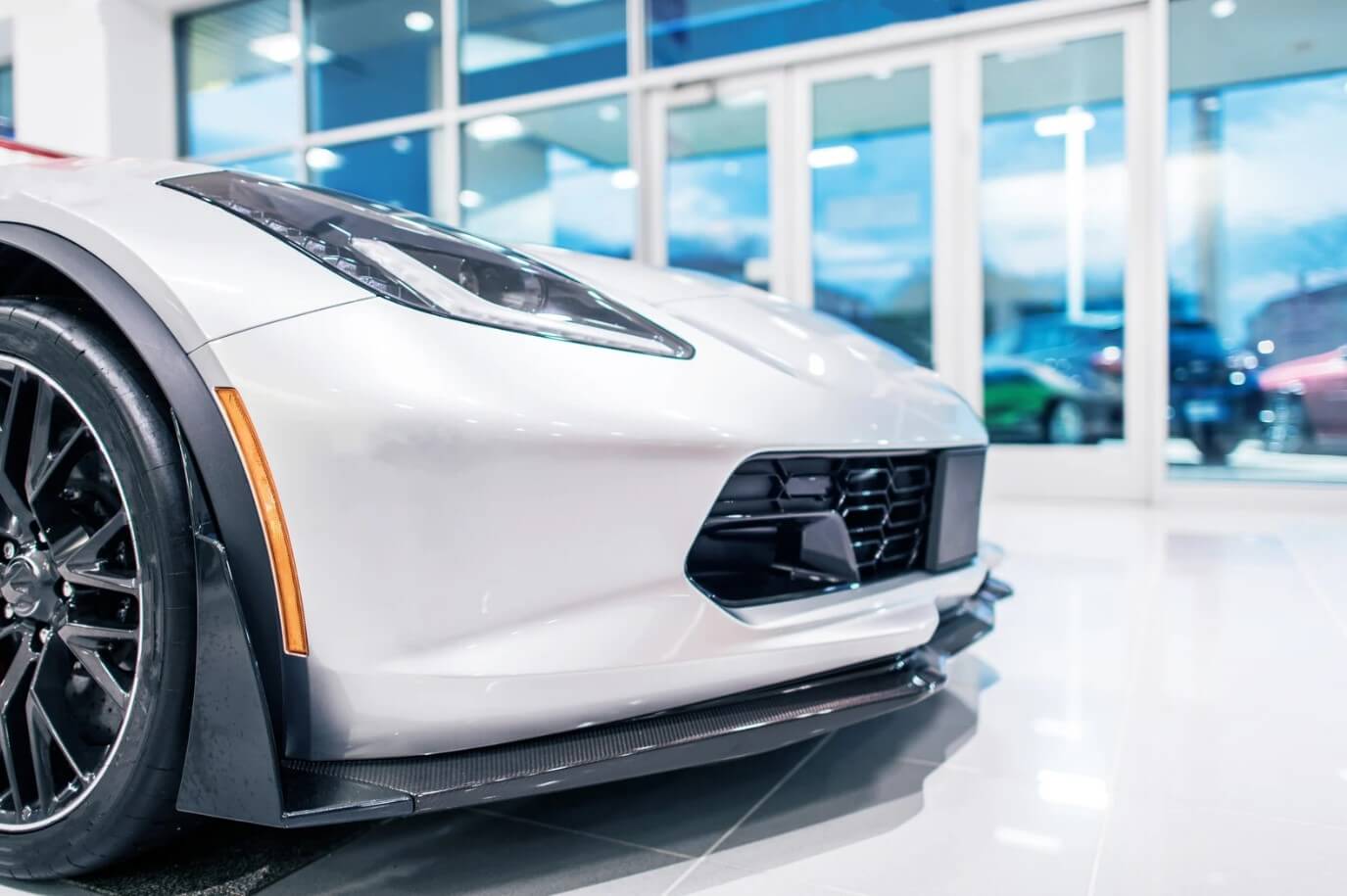
AI is rapidly changing the way car salesman work, offering tools to automate tasks, personalize interactions, and improve overall efficiency. Here are some of the key ways AI is being used by car salesman:
1. Lead Qualification and Prioritization using AI for Car Salesman
AI-powered CRM systems can analyze lead data, such as online behavior, demographics, and financial information, to predict the likelihood of a lead converting into a sale.
This allows salesman to prioritize their efforts and focus on the most promising leads, improving efficiency and increasing sales conversions.
How SimpSocial helps: SimpSocial’s integration with CRM systems and AI-powered chatbot Sarah.ai can help qualify leads by gathering information and engaging in initial conversations, providing valuable insights to salesman.
2. Personalized Communication
AI for car salesman can analyze customer data to personalize communication, such as email content, text messages, and even video messages.
This helps salesman tailor their approach to each individual lead, building rapport and increasing engagement.
How SimpSocial helps: SimpSocial enables personalized communication through various channels, including text messaging, video texting, and email, allowing salesman to connect with leads on a more personal level.
3. Automated Follow-up
AI-powered tools can automate follow-up communication with leads, ensuring that no opportunity falls through the cracks.
This can include sending personalized emails, text messages, or even scheduling follow-up calls, freeing up salesman to focus on other tasks.
How SimpSocial helps: SimpSocial’s automated drip campaigns can nurture leads with personalized messages and reminders, keeping the dealership top-of-mind and encouraging engagement.
4. Virtual Assistants
AI-powered virtual assistants can handle routine tasks, such as scheduling appointments, answering basic questions, and providing information about vehicles.
This allows salesman to focus on more complex tasks, such as building relationships with customers and closing deals.
How SimpSocial helps: SimpSocial’s AI chatbot Sarah.ai can act as a virtual assistant, handling initial inquiries, answering FAQs, and even scheduling appointments, freeing up salesman’s time.
5. AI for Car Salesman Improves Customer Insights
AI can analyze customer data to provide insights into their preferences, needs, and behaviors.
This helps salesman better understand their customers and tailor their approach accordingly, leading to more successful interactions.
How SimpSocial helps: SimpSocial’s integration with CRM systems and analytics dashboards provide valuable customer insights, helping salesman personalize their interactions and offer relevant solutions.
6. Enhanced Sales Presentations
AI can be used to create interactive and engaging sales presentations, incorporating elements like virtual reality and augmented reality.
This can help salesman showcase vehicles in a more immersive and compelling way, capturing customer attention and increasing interest.
How SimpSocial helps: SimpSocial’s video texting feature allows salesman to create personalized video presentations, showcasing vehicle features and benefits in a more engaging way.
7. Predictive Analytics
AI can analyze historical sales data and market trends to predict future demand and identify potential sales opportunities.
This helps salesman anticipate customer needs and proactively offer relevant vehicles and services.
How SimpSocial helps: SimpSocial’s analytics dashboard can provide insights into sales trends and customer behavior, helping salesman identify potential opportunities and tailor their approach.
Benefits of AI for Car Salesman
Increased Efficiency: Automating tasks and prioritizing leads allows salesman to focus on the most promising opportunities.
Improved Lead Conversion: Personalized communication and automated follow-up help nurture leads and move them through the sales funnel.
Enhanced Customer Satisfaction: AI-powered tools can help salesman provide prompt and personalized service, leading to greater customer satisfaction.
Data-Driven Insights: AI can provide valuable insights into customer behavior and preferences, helping salesman tailor their approach.
Increased Sales: By improving efficiency, lead conversion, and customer satisfaction, AI can ultimately help car salesman increase their sales performance.
AI is transforming the role of the car salesperson, providing tools to enhance communication, personalize interactions, and improve overall efficiency. By embracing AI and leveraging platforms like SimpSocial, car salesman can gain a competitive edge and thrive in the evolving automotive market.
Make Me More Profit Now
Car Sales Lead Generation: Strategies for Success

Car sales lead generation is the process of attracting and identifying potential customers who are interested in purchasing a vehicle. It’s a critical aspect of any car dealership’s success, as it provides a steady stream of potential buyers for their inventory.
Key Strategies for Car Sales Lead Generation
1. Digital Marketing
Website Optimization: A user-friendly website with detailed vehicle information, high-quality photos, and easy-to-use search functionality is essential for attracting online leads.
Search Engine Optimization (SEO): Optimizing the website and content for relevant keywords can improve search engine rankings and drive organic traffic.
Paid Advertising: Utilizing platforms like Google Ads and social media advertising can target specific demographics and interests, generating qualified leads.
Social Media Marketing: Engaging content, interactive posts, and targeted advertising on social media platforms can attract potential customers and generate leads.
Email Marketing: Building an email list and sending targeted email campaigns can nurture leads and keep the dealership top-of-mind.
2. Traditional Marketing
Direct Mail Marketing: Although less common today, direct mail can still be effective for targeting specific demographics.
Print Advertising: Advertising in local newspapers and magazines can reach a local audience.
Referral Programs: Offering incentives to existing customers for referring friends and family can be a valuable source of leads.
Community Events: Participating in local events and sponsoring community activities can generate leads and build brand awareness.
3. Other Strategies
CRM: A CRM system can help dealerships track leads, manage interactions, and automate communication.
BDC: A dedicated BDC can handle inbound and outbound communication, qualify leads, and schedule appointments.
Online Chat: Providing live chat support on the website can engage visitors and capture leads in real-time.
Video Marketing: Creating engaging video content, such as vehicle walkarounds and customer testimonials, can attract and convert leads.
Best Practices for Car Sales Lead Generation
Target the Right Audience: Identify the ideal customer profile and tailor marketing efforts to reach those specific demographics and interests.
Provide Valuable Content: Offer informative and engaging content that addresses customer needs and helps them make informed decisions.
Optimize the Website for Lead Capture: Include clear calls to action, contact forms, and lead capture mechanisms on the website.
Track and Measure Results: Monitor the performance of car sales lead generation efforts, analyze data, and make adjustments to optimize results.
SimpSocial's Role in Car Sales Lead Generation
SimpSocial’s platform offers tools that can enhance a dealership’s ability to generate, manage, and convert leads:
AI-Powered Chatbot: Sarah.ai can engage with website visitors, qualify leads, and even schedule appointments, capturing valuable leads 24/7.
Broadcast Messaging: Allows dealerships to send targeted messages to large groups of potential customers, promoting new inventory or special offers.
BDC Drip Campaigns: Automate personalized follow-up communication with leads, nurturing them through the sales funnel.
Video Texting: Enables salespeople to send personalized video messages to leads, showcasing vehicles and building rapport.
Guest Page Portal: Provides a seamless online experience for leads to interact with the dealership, browse inventory, and schedule appointments.
By leveraging SimpSocial’s features, dealerships can streamline their lead generation efforts, improve lead quality, and increase sales conversions.
Make Me More Profit Now
Vehicle Sales Leads: Strategies for Dealership Success

Vehicle sales leads are potential customers who have expressed interest in purchasing a vehicle. These leads can be generated through a variety of sources, both online and offline, and are essential for the success of any car dealership or salesperson.
Types of Vehicle Sales Leads
Internet Leads: Generated through online channels such as dealership websites, third-party automotive websites (e.g., Autotrader, Cars.com, Kelley Blue Book), social media platforms, and online advertising. These leads often involve customers submitting inquiries, requesting information, or scheduling test drives online.
Phone Leads: Generated through phone calls to the dealership, either inbound inquiries from potential customers or outbound calls made by the dealership’s sales team or BDC (Business Development Center).
Walk-in Leads: Customers who visit the dealership in person without prior contact. Although less common now with the prevalence of online car shopping, walk-ins can still be valuable vehicle sales leads.
Referral Leads: Generated through referrals from existing customers, employees, or other businesses. Referrals often come with a higher level of trust and can be more likely to convert into sales.
Importance of Qualifying Leads
Not all leads are created equal. It’s essential to qualify leads to determine their level of interest, purchase intent, and budget. Qualifying questions might include:
- What type of vehicle are you interested in?
- What is your budget?
- When are you looking to purchase?
- Have you visited other dealerships?
- Are you considering trading in a vehicle?
By qualifying leads, dealerships and salespeople can prioritize their efforts and focus on the most promising opportunities.
Sources of Vehicle Sales Leads
Dealership Website: A well-designed website with detailed vehicle information, online financing tools, and clear calls to action is crucial for generating leads.
Third-Party Automotive Websites: Listing inventory on popular car shopping websites can increase visibility and generate leads.
Social Media: Engaging content, targeted advertising, and social media campaigns can attract potential customers and generate leads.
Online Advertising: Paid advertising on search engines (Google Ads) and social media platforms can reach a wider audience and generate vehicle sales leads.
Email Marketing: Building an email list and sending targeted email campaigns can nurture leads and keep the dealership top-of-mind.
Direct Mail Marketing: Although less common today, direct mail can still be effective for targeting specific demographics.
Referral Programs: Offering incentives to existing customers for referring friends and family can be a valuable source of leads.
Community Events: Participating in local events and sponsoring community activities can generate leads and build brand awareness.
Effective Lead Management
Once vehicle sales leads are generated, it’s crucial to have a system for managing them effectively. This includes:
Prompt Follow-up: Responding to leads quickly and efficiently is essential for maintaining interest and building rapport.
Personalized Communication: Tailoring communication to the individual needs and preferences of each lead can improve engagement and conversion rates.
Lead Nurturing: Staying in touch with leads over time, providing relevant information and offers, can help move them through the sales funnel.
CRM Systems: Using a CRM system to track leads, manage interactions, and automate communication can improve efficiency and effectiveness.
SimpSocial's Role in Lead Generation and Management
SimpSocial’s platform offers tools that can enhance a dealership’s ability to generate, manage, and convert leads:
AI-Powered Chatbot: Sarah.ai can engage with website visitors, qualify leads, and even schedule appointments, capturing valuable leads 24/7.
Broadcast Messaging: Allows dealerships to send targeted messages to large groups of potential customers, promoting new inventory or special offers.
BDC Drip Campaigns: Automate personalized follow-up communication with leads, nurturing them through the sales funnel.
Video Texting: Enables salespeople to send personalized video messages to leads, showcasing vehicles and building rapport.
Guest Page Portal: Provides a seamless online experience for vehicle sales leads to interact with the dealership, browse inventory, and schedule appointments.
By leveraging SimpSocial’s features, dealerships can improve their lead generation and management processes, leading to increased sales and customer satisfaction.
Make Me More Profit Now
Understanding Car Leads for Salesmen
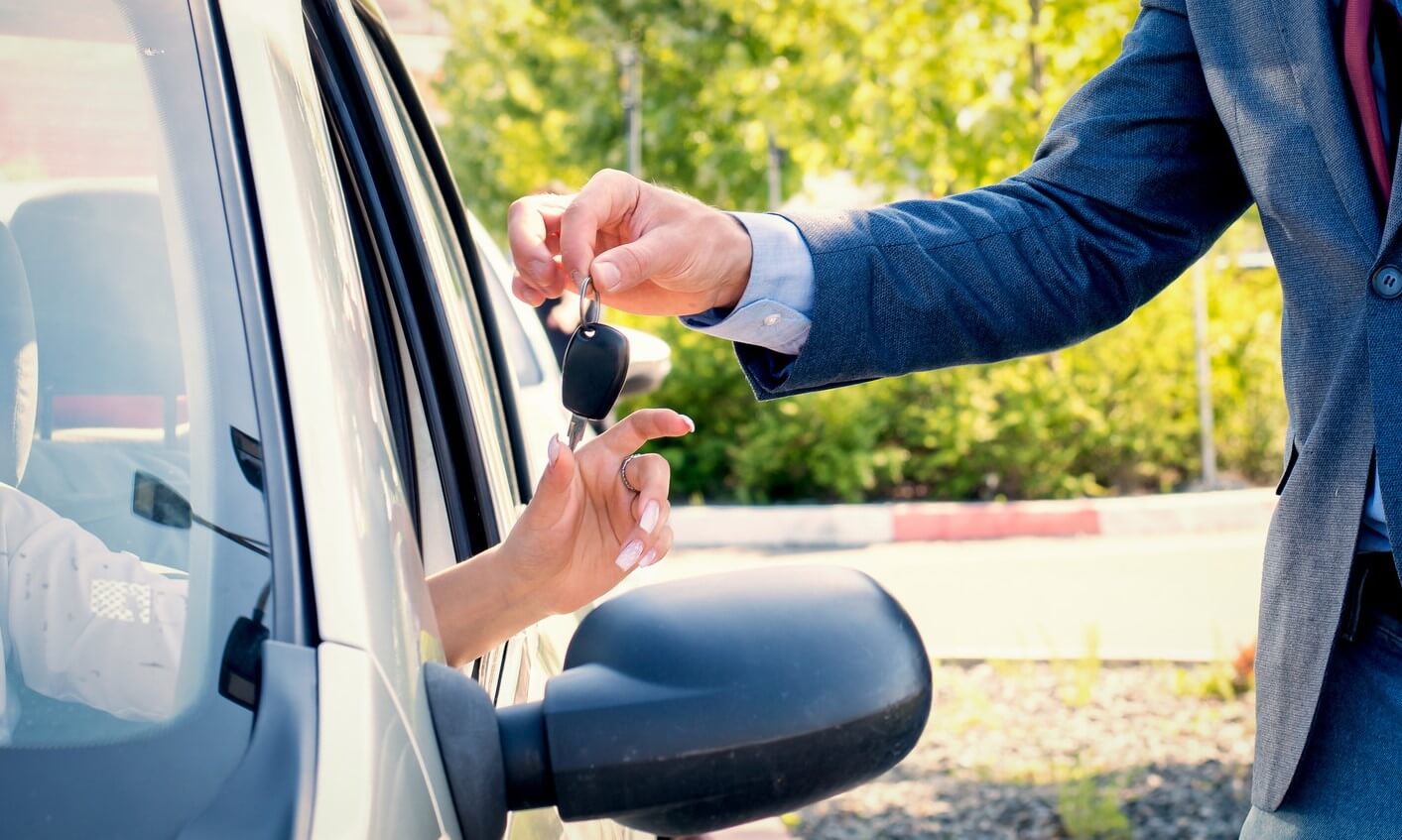
Car leads for salesmen are potential customers who have shown interest in purchasing a vehicle and are ready to be contacted by a salesperson. These leads can be generated through various channels and are essential for automotive salespeople to achieve their sales targets.
Types of Car Leads for Salesmen
Internet Leads: Generated from online sources like dealership websites, third-party automotive websites (e.g., Autotrader, Cars.com), social media, and online advertising. These leads often involve customers submitting inquiries, requesting information, or scheduling test drives online.
Phone Leads: Generated from phone calls to the dealership, either inbound inquiries from potential customers or outbound calls made by the dealership’s BDC (Business Development Center).
Walk-in Leads: Customers who visit the dealership in person without prior contact. Although less frequent in the digital age, walk-ins can still be valuable leads.
Referral Leads: Generated through referrals from existing customers, employees, or other businesses. Referrals often have a higher level of trust and can be more likely to convert into sales.
Qualifying Car Leads for Salesmen
It’s crucial for salespeople to qualify leads to determine their level of interest, purchase intent, and budget. Qualifying questions might include:
- What type of vehicle interests you?
- What is your budget?
- When are you looking to purchase?
- Have you visited other dealerships?
- Are you considering trading in a vehicle?
By qualifying leads, salespeople can prioritize their efforts and focus on the most promising opportunities.
Sources of Car Leads for Salesmen
Dealership’s CRM System: The dealership’s Customer Relationship Management (CRM) system stores information about leads, including their contact details, vehicle interests, and interaction history.
BDC (Business Development Center): The BDC qualifies and nurtures leads before passing them on to salespeople.
Third-Party Lead Providers: Companies that specialize in generating and selling leads to dealerships.
Online Lead Generation Platforms: Platforms that capture leads through online advertising and marketing campaigns.
Social Media: Salespeople can generate leads through their own social media networks by sharing engaging content and interacting with potential customers.
Networking: Building relationships with people in the community can lead to referrals and sales opportunities.
Best Practices for Working with Car Leads
Prompt Follow-up: Responding to leads quickly and efficiently is crucial for maintaining interest.
Personalized Communication: Tailoring communication to the individual needs and preferences of each lead can improve engagement.
Product Knowledge: Salespeople should have a thorough understanding of the vehicles they sell and be able to answer customer questions confidently.
Relationship Building: Building rapport and trust with leads is essential for closing sales.
Effective Closing Techniques: Salespeople should master closing techniques to guide leads toward a purchase decision.
Follow-up After the Sale: Maintaining contact with customers after the sale can lead to repeat business and referrals.
SimpSocial's Value for Salesmen
SimpSocial’s platform can be a valuable tool for automotive salespeople, providing features that enhance communication and lead management.
Access to Lead Information: SimpSocial integrates with dealership CRM systems, providing salespeople with easy access to lead contact details, vehicle interests, and interaction history.
Personalized Communication Tools: SimpSocial enables salespeople to send personalized text messages, video messages, and emails to leads, building rapport and nurturing relationships.
Automated Follow-up: SimpSocial’s drip campaign feature automates personalized follow-up communication, ensuring that leads are consistently engaged.
Appointment Scheduling: SimpSocial allows salespeople to easily schedule appointments with leads, streamlining the sales process.
Mobile-First Design: SimpSocial’s mobile-first platform allows salespeople to access lead information and communicate with customers from anywhere, anytime.
By leveraging SimpSocial’s features, car salespeople can improve their efficiency, enhance their communication with leads, and ultimately increase their sales performance.
Make Me More Profit Now
Car Dealership Leads: How to Generate and Convert More Buyers

Car dealership leads are potential customers who have expressed interest in purchasing a vehicle or utilizing the services offered by a car dealership. These leads are the lifeblood of any dealership’s sales process, and generating and managing them effectively is crucial for success in the competitive automotive market.
Types of Car Dealership Leads
Internet Leads: These leads are generated through a dealership’s website, online advertising, third-party automotive websites (like Autotrader or Cars.com), and social media platforms. They often involve customers submitting inquiries, requesting information, or scheduling test drives online.
Phone Leads: These car dealership leads come from phone calls to the dealership, either inbound inquiries from potential customers or outbound calls made by the dealership’s sales team or BDC (Business Development Center).
Walk-in Leads: These are customers who visit the dealership in person without prior contact. While less common in the age of online car shopping, walk-ins still represent valuable potential sales opportunities.
Referral Leads: Existing customers, employees, or other businesses generate these leads through referrals. Referrals often come with a higher level of trust and can be more likely to convert into sales.
Importance of Lead Qualification
Not all leads hold the same value. It’s essential to qualify car dealership leads to determine their level of interest, purchase intent, and budget. Qualifying questions might include:
- What type of vehicle interests you?
- What is your budget?
- When are you looking to purchase?
- Have you visited other dealerships?
- Are you considering trading in a vehicle?
By qualifying leads, dealerships can prioritize their efforts and focus on the most promising opportunities.
Sources of Car Dealership Leads
Dealership Website: A user-friendly website with detailed vehicle information, online financing tools, and clear calls to action is crucial for generating leads.
Third-Party Automotive Websites: Listing inventory on popular car shopping websites can increase visibility and generate leads.
Social Media: Engaging content, targeted advertising, and social media campaigns can attract potential customers and generate car dealership leads.
Online Advertising: Paid advertising on search engines (Google Ads) and social media platforms can reach a wider audience and generate leads.
Email Marketing: Building an email list and sending targeted email campaigns can nurture leads and keep the dealership top-of-mind.
Direct Mail Marketing: Although less common today, direct mail can still be effective for targeting specific demographics.
Referral Programs: Offering incentives to existing customers for referring friends and family can be a valuable source of leads.
Community Events: Participating in local events and sponsoring community activities can generate leads and build brand awareness.
Effective Lead Management
Once leads are generated, it’s crucial to have a system for managing them effectively. This includes:
Prompt Follow-up: Responding to leads quickly and efficiently is essential for maintaining interest and building rapport.
Personalized Communication: Tailoring communication to the individual needs and preferences of each lead can improve engagement and conversion rates.
Lead Nurturing: Staying in touch with leads over time, providing relevant information and offers, can help move them through the sales funnel.
CRM Systems: Using a CRM (Customer Relationship Management) system to track leads, manage interactions, and automate communication can improve efficiency and effectiveness.
SimpSocial's Role in Lead Generation and Management
SimpSocial’s platform offers tools that can enhance a dealership’s ability to generate, manage, and convert leads:
AI-Powered Chatbot: Sarah.ai can engage with website visitors, qualify leads, and even schedule appointments, capturing valuable leads 24/7.
Broadcast Messaging: Allows dealerships to send targeted messages to large groups of potential customers, promoting new inventory or special offers.
BDC Drip Campaigns: Automate personalized follow-up communication with car dealership leads, nurturing them through the sales funnel.
Video Texting: Enables salespeople to send personalized video messages to leads, showcasing vehicles and building rapport.
Guest Page Portal: Provides a seamless online experience for leads to interact with the dealership, browse inventory, and schedule appointments.
By leveraging SimpSocial’s features, dealerships can improve their lead generation and management processes, leading to increased sales and customer satisfaction.
Make Me More Profit Now
Automotive BDC: Key to Customer Engagement in Dealerships

An automotive BDC, or Business Development Center, is a specialized department within a car dealership that handles customer interactions, primarily through phone, email, and online channels. The main goals of a BDC are to generate and qualify leads, set appointments for the sales and service departments, and improve customer satisfaction.
Think of the BDC as the central communication hub for the dealership, connecting with customers at various touchpoints in their journey.
Key Functions of an Automotive BDC
Inbound Lead Management: Responding to incoming phone calls, emails, and online inquiries from potential customers. This includes answering questions, providing information, and attempting to schedule showroom visits or service appointments.
Outbound Prospecting: Making outbound calls to follow up on leads, contact previous customers, and generate new interest in the dealership’s vehicles and services.
Appointment Setting: A primary focus is to schedule appointments for the sales and service departments, ensuring a steady flow of customers to the dealership.
Lead Qualification: Gathering information about customer needs, preferences, and budget to determine their level of interest and sales potential.
Customer Service: Serving as a point of contact for customers, answering questions, addressing concerns, and ensuring a positive customer experience.
Data Management: Maintaining customer records, tracking interactions, and updating information in the dealership’s CRM system.
Benefits of Having an Automotive BDC
Increased Efficiency: Frees up salespeople and service advisors to focus on their core responsibilities, while the BDC handles initial customer interactions.
Improved Lead Conversion: BDC agents are trained to effectively qualify and nurture leads, increasing the likelihood of converting them into appointments and sales.
Enhanced Customer Satisfaction: Provides a dedicated point of contact for customers, ensuring prompt and personalized communication.
Consistent Communication: Ensures consistent follow-up with leads and customers, preventing missed opportunities and nurturing relationships.
Data-Driven Insights: Tracks customer interactions and provides valuable data that can be used to improve marketing and sales strategies.
Types of BDCs
In-House BDC: A department located within the dealership, staffed by dealership employees.
Outsourced BDC: A third-party company that provides BDC services to dealerships remotely.
Technology Used in Automotive BDCs
CRM Software: To manage customer data, track interactions, and automate communication.
Phone Systems: With features like call routing, recording, and analytics.
Email Marketing Platforms: To send targeted email campaigns.
Text Messaging Platforms: To communicate with customers via text.
Online Chat: To engage with website visitors in real-time.
BDCs and SimpSocial
SimpSocial’s platform can be a valuable asset for automotive BDCs, providing tools to enhance communication and improve efficiency.
AI-Powered Chatbot: Sarah.ai can handle initial customer interactions, qualify leads, and even schedule appointments.
Broadcast Messaging: Allows BDCs to send targeted messages to large groups of customers.
BDC Drip Campaigns: Automate personalized follow-up communication with leads.
Video Texting: Enables BDC agents to send personalized video messages to customers.
Guest Page Portal: Provides a seamless online experience for customers to interact with the dealership.
By integrating SimpSocial into their workflow, BDCs can streamline their operations, improve lead conversion rates, and enhance customer satisfaction.
Make Me More Profit Now
BDC Auto: The Backbone of Dealership Lead Generation

A BDC, or Business Development Center, in the automotive industry is a specialized department within a dealership that focuses on handling customer interactions, primarily through phone, email, and online channels. The main goals of a BDC Auto are to generate and qualify leads, set appointments for the sales and service departments, and improve customer satisfaction.
Key Functions of an BDC Auto
Inbound Lead Management: Responding to incoming phone calls, emails, and online inquiries from potential customers. This includes answering questions, providing information, and attempting to schedule showroom visits or service appointments.
Outbound Prospecting: Making outbound calls to follow up on leads, contact previous customers, and generate new interest in the dealership’s vehicles and services.
Appointment Setting: A primary focus is to schedule appointments for the sales and service departments, ensuring a steady flow of customers to the dealership.
Lead Qualification: Gathering information about customer needs, preferences, and budget to determine their level of interest and sales potential.
Customer Service: Serving as a point of contact for customers, answering questions, addressing concerns, and ensuring a positive customer experience.
Data Management: Maintaining customer records, tracking interactions, and updating information in the dealership’s CRM system.
Benefits of Having a BDC Auto
Increased Efficiency: Frees up salespeople and service advisors to focus on their core responsibilities, while the BDC handles initial customer interactions.
Improved Lead Conversion: BDC auto agents are trained to effectively qualify and nurture leads, increasing the likelihood of converting them into appointments and sales.
Enhanced Customer Satisfaction: Provides a dedicated point of contact for customers, ensuring prompt and personalized communication.
Consistent Communication: Ensures consistent follow-up with leads and customers, preventing missed opportunities and nurturing relationships.
Data-Driven Insights: Tracks customer interactions and provides valuable data that can be used to improve marketing and sales strategies.
Types of BDCs
In-House BDC: A department located within the dealership, staffed by dealership employees.
Outsourced BDC: A third-party company that provides BDC services to dealerships remotely.
Technology Used in BDCs Auto
CRM Software: To manage customer data, track interactions, and automate communication.
Phone Systems: With features like call routing, recording, and analytics.
Email Marketing Platforms: To send targeted email campaigns.
Text Messaging Platforms: To communicate with customers via text.
Online Chat: To engage with website visitors in real-time.
BDCs and SimpSocial
SimpSocial’s platform can be a valuable asset for automotive BDCs, providing tools to enhance communication and improve efficiency.
AI-Powered Chatbot: Sarah.ai can handle initial customer interactions, qualify leads, and even schedule appointments.
Broadcast Messaging: Allows BDCs to send targeted messages to large groups of customers.
BDC Drip Campaigns: Automate personalized follow-up communication with leads.
Video Texting: Enables BDC auto agents to send personalized video messages to customers.
Guest Page Portal: Provides a seamless online experience for customers to interact with the dealership.
By integrating SimpSocial into their workflow, BDCs can streamline their operations, improve lead conversion rates, and enhance customer satisfaction.
Make Me More Profit Now
Auto Sales Leads: Strategies for Generation and Conversion
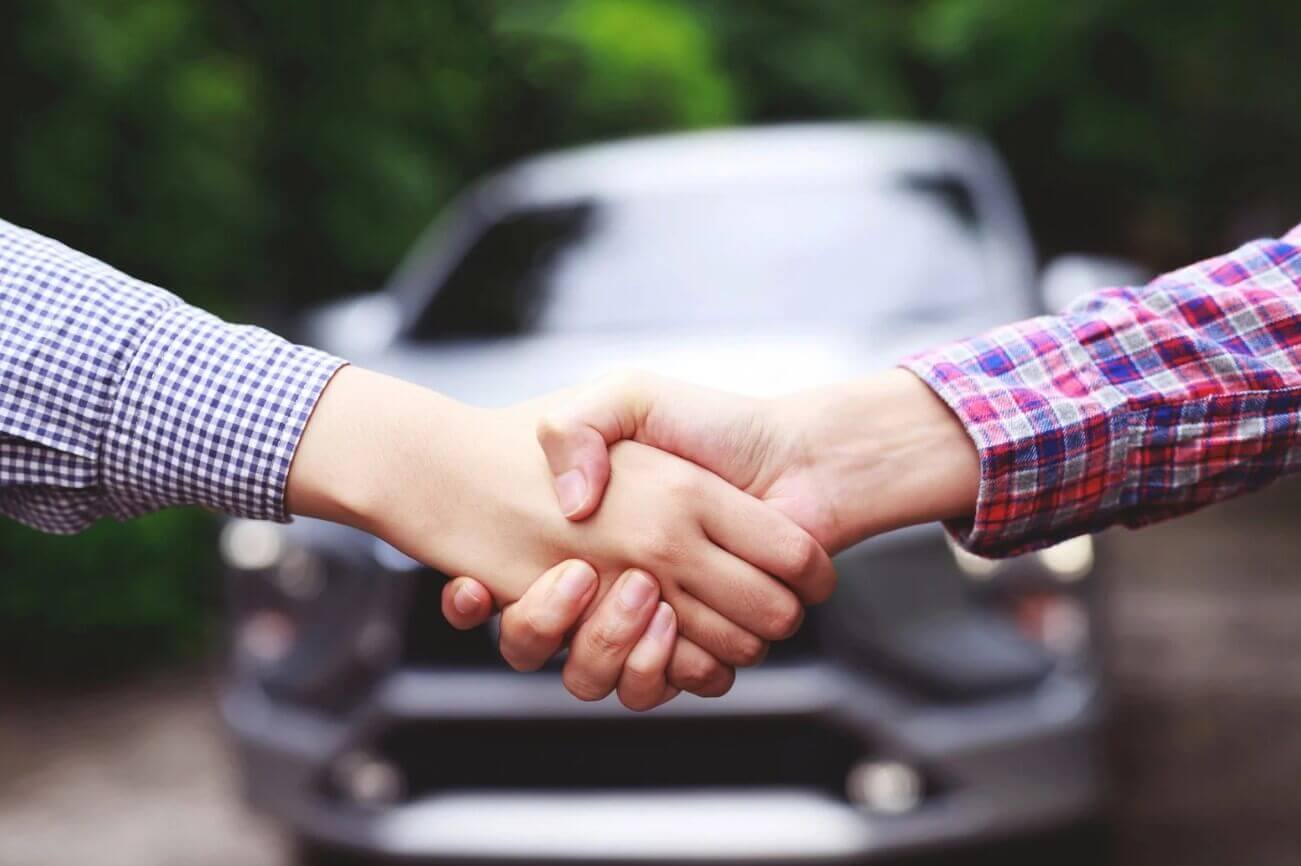
Auto sales leads are potential customers who have shown interest in purchasing a vehicle. These leads can come from a variety of sources, including online inquiries, phone calls, showroom visits, and referrals. Effective lead generation and management are crucial for the success of any car dealership.
Types of Auto Sales Leads
Internet Leads: Generated through online channels such as dealership websites, third-party automotive websites, social media, and online advertising.
Phone Leads: Generated through phone calls to the dealership, either inbound inquiries or outbound prospecting calls.
Walk-in Leads: Generated when customers visit the dealership in person.
Referral Leads: Generated through referrals from existing customers, employees, or other businesses.
Qualifying Auto Sales Leads
Not all leads are created equal. It’s essential to qualify leads to determine their level of interest, purchase intent, and budget. Qualifying questions might include:
- What type of vehicle are you interested in?
- What is your budget?
- When are you looking to purchase?
- Have you visited other dealerships?
- Are you considering trading in a vehicle?
Sources of Auto Sales Leads
Dealership Website: A well-designed website with clear calls to action can generate leads through contact forms, online chat, and inventory search.
Third-Party Automotive Websites: Websites like Auto trader, Cars.com, and Kelley Blue Book allow dealerships to list their inventory and capture leads.
Social Media: Platforms like Facebook, Instagram, and YouTube can be used to generate leads through targeted advertising, organic content, and social engagement.
Online Advertising: Paid advertising on search engines (Google Ads) and social media platforms can generate leads by targeting specific demographics and interests.
Email Marketing: Email campaigns can nurture leads and keep dealerships top-of-mind.
Direct Mail Marketing: Although less common today, direct mail can still be effective for targeting specific demographics.
Referral Programs: Incentivizing existing customers to refer friends and family can be a valuable source of leads.
Community Events: Participating in local events and sponsoring community activities can generate leads and build brand awareness.
Lead Management
Once leads are generated, it’s crucial to have a system for managing them effectively. This includes:
Prompt Follow-up: Responding to leads quickly and efficiently is essential for maintaining interest and building rapport.
Personalized Communication: Tailoring communication to the individual needs and preferences of each lead can improve engagement and conversion rates.
Lead Nurturing: Staying in touch with leads over time, providing relevant information and offers, can help move them through the sales funnel.
CRM Systems: Using a CRM system to track leads, manage interactions, and automate communication can improve efficiency and effectiveness.
SimpSocial's Role
SimpSocial’s platform can help dealerships generate, manage, and convert auto sales leads more effectively.
AI-Powered Chatbot: Sarah.ai can engage with website visitors, qualify leads, and even schedule appointments, capturing valuable leads 24/7.
Broadcast Messaging: Allows dealerships to send targeted messages to large groups of potential customers, promoting new inventory or special offers.
BDC Drip Campaigns: Automate personalized follow-up communication with leads, nurturing them through the sales funnel.
Video Texting: Enables salespeople to send personalized video messages to leads, showcasing vehicles and building rapport.
Guest Page Portal: Provides a seamless online experience for leads to interact with the dealership, browse inventory, and schedule appointments.
By leveraging SimpSocial’s features, dealerships can improve their lead generation and management processes, leading to increased sales and customer satisfaction.
Make Me More Profit Now
Automotive BDC: Boosting Lead Generation and Sales

In the automotive industry, a BDC stands for Business Development Center. It’s a specialized department within a car dealership that handles inbound and outbound customer communications, primarily focusing on lead generation, qualification, and appointment setting. Think of it as the central communication hub for sales and service.
Key Functions of an Automotive BDC
Inbound Lead Management: BDC agents handle incoming calls, emails, and online inquiries from potential customers. They answer questions, provide information about vehicles and services, and attempt to schedule appointments for sales or service visits.
Outbound Prospecting: BDC agents follow up on leads, contact past customers, and generate new leads via campaigns.
Appointment Setting: The BDC’s main goal is booking sales and service appointments to keep the dealership busy.
Lead Qualification: BDC agents qualify leads by gathering information about customer needs, preferences, and budget, helping to prioritize and personalize follow-up efforts.
Customer Service: The BDC handles customer inquiries, resolves concern, and ensures a positive experience.
Data Management: BDC agents maintain customer records, track interactions, and update information in the dealership’s CRM system.
Benefits of Having an Automotive BDC
Increased Efficiency: The BDC handles initial customer interactions, freeing up salespeople to focus on closing deals and service advisors to focus on addressing customer needs.
Improved Lead Conversion: BDC agents are trained to effectively qualify and nurture leads, increasing the likelihood of converting them into appointments and sales.
Enhanced Customer Satisfaction: The BDC provides a dedicated point of contact for customers, ensuring prompt and personalized communication, which leads to greater satisfaction.
Consistent Communication: The BDC ensures consistent follow-up with leads and customers, preventing missed opportunities and nurturing relationships.
Data-Driven Insights: The BDC tracks customer interactions and provides valuable data that can be used to improve marketing and sales strategies.
Types of Automotive BDCs
In-House BDC: A department located within the dealership, staffed by dealership employees.
Outsourced BDC: A third-party company that provides BDC services to dealerships remotely.
Technology Used in Automotive BDCs
CRM Software: To manage customer data, track interactions, and automate communication.
Phone Systems: With features like call routing, recording, and analytics.
Email Marketing Platforms: To send targeted email campaigns.
Text Messaging Platforms: To communicate with customers via text.
Online Chat: To engage with website visitors in real-time.
SimpSocial's Role in the Automotive BDC
SimpSocial’s platform can be a valuable asset for automotive BDCs, providing tools to enhance communication and improve efficiency.
AI-Powered Chatbot: Sarah.ai can handle initial customer interactions, qualify leads, and even schedule appointments, freeing up BDC agents for other tasks.
Broadcast Messaging: Allows BDCs to send targeted messages to large groups of customers, promoting special offers or events.
BDC Drip Campaigns: Automate personalized follow-up communication with leads, nurturing them through the sales funnel.
Video Texting: Enables BDC agents to send personalized video messages to customers, building rapport and showcasing vehicles.
Guest Page Portal: Provides a seamless online experience for customers to interact with the dealership, schedule appointments, and access information.
By integrating SimpSocial into their workflow, automotive BDCs can streamline their operations, improve lead conversion rates, and enhance customer satisfaction.
Make Me More Profit Now
Car Dealer Computer Software: Key Categories and Solutions

Car dealer computer software encompasses a wide range of applications designed to streamline and optimize various aspects of dealership operations. These software solutions help dealerships manage inventory, sales, customer relationships, finance and insurance, service, and other critical functions.
Key Categories of Car Dealer Computer Software
Dealer Management System (DMS): This is the core software that manages most aspects of a dealership’s operations, including inventory management, sales, F&I, service, parts, and customer data.
Customer Relationship Management (CRM): CRM software helps dealerships manage customer interactions, track leads, automate follow-up communication, and build stronger customer relationships.
Inventory Management Software: This software helps dealerships track inventory levels, optimize pricing, and manage the flow of vehicles from acquisition to sale.
Sales and F&I Software: This software assists with sales processes, including deal structuring, financing options, and electronic document management.
Service and Parts Software: This software helps dealerships manage service appointments, track repair orders, and manage parts inventory.
Marketing and Advertising Software: This software helps dealerships create and manage marketing campaigns, track leads, and measure marketing ROI.
Reporting and Analytics Software: This software provides dealerships with insights into key performance indicators (KPIs), such as sales trends, inventory turnover, and customer satisfaction.
Benefits of Using the Computer Software
Improved Efficiency: Automates tasks, reduces manual errors, and streamlines workflows, leading to increased efficiency and productivity.
Enhanced Customer Experience: Provides tools for personalized communication, automated follow-up, and improved customer service, leading to greater customer satisfaction and loyalty.
Increased Sales: Helps dealerships manage leads, track sales performance, and optimize pricing, leading to increased sales and revenue.
Better Inventory Management: Provides real-time visibility into inventory levels, helps optimize pricing, and reduces inventory holding costs.
Improved Compliance: Helps dealerships comply with various regulations related to sales, financing, and data privacy.
Data-Driven Decision Making: Provides access to data and analytics, enabling dealerships to make informed decisions about their operations.
Popular Car Dealer Computer Software
CDK Global: Provides a comprehensive DMS and other software solutions for dealerships.
Reynolds and Reynolds: Offers a DMS, CRM, and other software solutions for dealerships.
Cox Automotive: Provides a suite of software solutions for dealerships, including vAuto for inventory management and Dealertrack for F&I.
Autotrader: Offers a CRM and other software solutions for dealerships, as well as online advertising and marketing services.
Kelley Blue Book: Provides vehicle valuation data and other software solutions for dealerships.
SimpSocial's Integration with Dealer Computer Software
SimpSocial complements and integrates with existing car dealer computer software to enhance communication and customer engagement.
Integration with DMS: SimpSocial can integrate with DMS systems to access customer data, vehicle information, and other relevant data.
CRM Enhancement: SimpSocial’s communication tools enhance CRM functionality by providing additional channels for customer interaction and engagement.
Data-Driven Insights: SimpSocial’s analytics dashboard provides valuable data that can be used to inform decision-making in other software systems.
By integrating SimpSocial with their existing software ecosystem, car dealerships can create a more unified and efficient technology infrastructure that supports all aspects of their operations.
Make Me More Profit Now
How AI and Cars is Transforming the Automotive Industry

AI is rapidly changing the automotive industry, transforming car design, manufacturing, driving, and maintenance. Here’s a look at some key ways AI enhances cars:
1. Autonomous Driving
AI is the brain behind self-driving cars, enabling them to perceive their surroundings, make decisions, and navigate roads without human intervention.
Machine learning algorithms process massive datasets of real-world driving data, allowing autonomous vehicles to learn and adapt to different driving scenarios.
AI-powered perception systems use sensors like cameras, lidar, and radar to identify objects, interpret road signs, and understand traffic flow.
Path planning algorithms determine the safest and most efficient route to a destination, taking into account traffic conditions, road rules, and other factors.
2. Advanced Driver-Assistance Systems (ADAS)
AI is used to enhance ADAS features like adaptive cruise control, lane keeping assist, and automatic emergency braking.
AI algorithms can analyze sensor data to detect potential hazards and provide warnings or even take corrective action to prevent accidents.
Driver monitoring systems use AI to detect signs of drowsiness or distraction, alerting drivers to stay focused on the road.
3. Enhanced Safety Features
AI powers the development of more sophisticated safety features that can predict and prevent accidents.
AI algorithms can analyze data from various sensors to identify potential risks, such as a pedestrian crossing the road or a car approaching an intersection.
Predictive safety systems can warn drivers of potential hazards and even take control of the vehicle to avoid collisions.
4. Improved Vehicle Performance
AI can optimize engine performance, fuel efficiency, and emissions by analyzing data from various sensors and adjusting engine parameters in real-time.
AI-powered predictive maintenance systems can anticipate potential problems and schedule maintenance before they occur, reducing downtime and repair costs.
5. Personalized In-Car Experiences
AI can personalize the driving experience by learning driver preferences and adjusting settings like seat position, climate control, and music selection.
AI-powered voice assistants can provide hands-free control of various vehicle functions, such as navigation, entertainment, and communication.
6. Streamlined Manufacturing
AI is being used to automate and optimize various aspects of car manufacturing, from design and production to quality control and logistics.
AI-powered robots can perform tasks like welding, painting, and assembly with greater precision and efficiency than humans.
AI can also be used to analyze data from the manufacturing process to identify areas for improvement and reduce defects.
Examples of AI and Cars
Tesla’s Autopilot system uses AI to enable semi-autonomous driving features like lane keeping, adaptive cruise control, and automatic lane changes.
Mercedes-Benz’s MBUX system uses AI to provide a personalized infotainment experience, including voice control, navigation, and entertainment.
BMW’s Intelligent Personal Assistant uses AI to learn driver preferences and provide proactive assistance, such as suggesting routes or reminding drivers of appointments.
AI is transforming the automotive industry, making cars safer, smarter, and more efficient. As AI technology continues to evolve, we can expect to see even more innovative applications in the years to come.
Make Me More Profit Now
Digital Dashboards in Cars: Features, Benefits and Examples
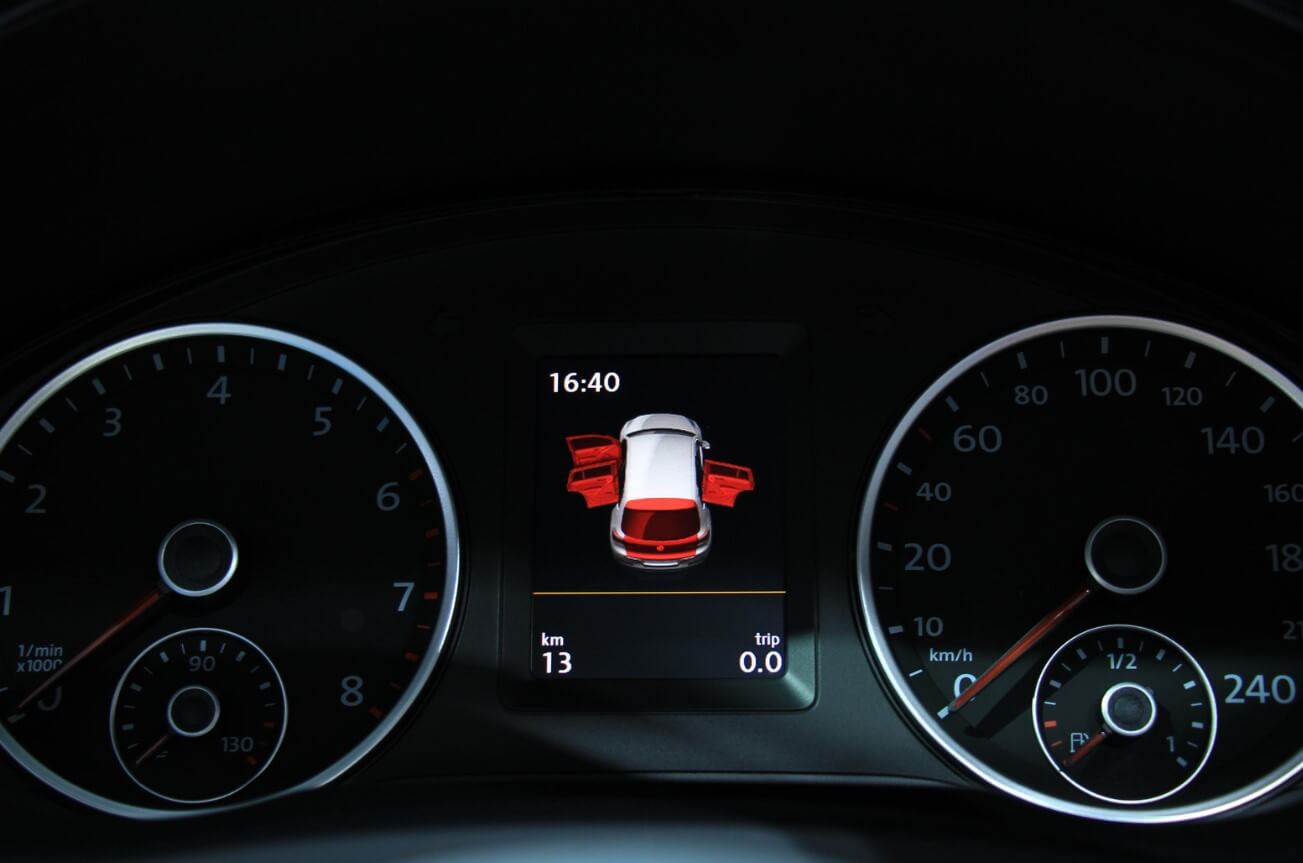
A digital dashboard in a car refers to an electronic instrument cluster that replaces traditional analog gauges with a digital display screen. This screen can display a wide range of information, including speed, engine RPM, fuel level, coolant temperature, and other vehicle data. Digital dashboards offer several advantages over traditional analog dashboards:
Advantages:
Customization: Digital dashboard in a car offer a high degree of customization, allowing drivers to choose what information is displayed and how it is presented. This can include different layouts, colors, and themes.
Enhanced Information: Digital dashboards can display a wider range of information than traditional gauges, including navigation instructions, media information, and driver-assistance system warnings.
Improved Readability: Digital displays can be easier to read in various lighting conditions, especially in bright sunlight or at night.
Modern Aesthetics: Digital dashboards provide a modern and high-tech look to the vehicle’s interior.
Flexibility: Digital dashboards can be easily updated with new features and information, providing greater flexibility over time.
Features:
Multiple Display Modes: Many Digital dashboards in a car offer different display modes, allowing drivers to switch between different layouts and information sets.
Navigation Integration: Some digital dashboards integrate with the vehicle’s navigation system, displaying turn-by-turn directions and maps directly on the instrument cluster.
Media Information: Digital dashboards can display information about the currently playing music, radio station, or podcast.
Driver-Assistance Systems: Warnings and information from driver-assistance systems, such as lane departure warning or adaptive cruise control, can be displayed on the digital dashboard.
Vehicle Health Reports: Some Digital dashboard in a car can provide vehicle health reports, including tire pressure, oil life, and other maintenance information.
Examples:
Many modern cars now offer digital dashboards as either standard or optional equipment. Some notable examples include:
Audi Virtual Cockpit: Audi’s Virtual Cockpit is a fully digital instrument cluster that replaces traditional gauges with a high-resolution display. It offers various display modes, including a classic view with simulated analog gauges and a full-screen map view.
Mercedes-Benz MBUX Hyperscreen: Mercedes-Benz’s MBUX Hyperscreen is a massive, curved display that spans the entire width of the dashboard. It integrates the instrument cluster, infotainment system, and passenger display into a single unit.
Tesla Model S and Model X: Tesla’s Model S and Model X feature a large central touchscreen that serves as the primary interface for the vehicle’s functions, including the instrument cluster.
Digital dashboard in a car are becoming increasingly common in modern cars, offering drivers a more customizable, informative, and engaging driving experience. As technology continues to advance, we can expect to see even more innovative features and capabilities in digital dashboards in the future.
Make Me More Profit Now
Optimizing Customer Lifecycle Management with SimpSocial

Let’s explore how SimpSocial integrates with and enhances each stage of the Customer Lifecycle Management process for automotive dealerships:
1. Awareness:
SimpSocial’s Role: SimpSocial helps dealerships increase brand awareness through targeted marketing campaigns. Broadcast Messaging can announce new inventory, special offers, or dealership events to a wide audience. Video Texting allows for engaging video introductions to the dealership and its staff, creating a more personal connection with potential customers. Dealerships can share Guest Page links on social media and other platforms, driving traffic to a custom landing page showcasing their offerings.
Customer Lifecycle Management Benefit: SimpSocial broadens reach and generates interest in the dealership and its vehicles, laying the foundation for customer acquisition.
2. Acquisition:
SimpSocial’s Role: SimpSocial facilitates lead capture and nurturing. Sarah.ai can handle initial inquiries via text, qualifying leads and gathering information. BDC Drip Campaigns automate personalized follow-ups, keeping the dealership top-of-mind and encouraging prospects to take the next step. Guest Page forms capture lead information directly.
Customer Lifecycle Management Benefit: SimpSocial streamlines the process of converting interested prospects into customers, improving efficiency and conversion rates.
3. Development:
SimpSocial’s Role: SimpSocial helps build relationships and increase customer value. Dealerships can use personalized text messages to follow up after a test drive or service appointment, request feedback, and offer additional services. Video Texting can deliver personalized thank-you messages or vehicle workarounds. Sarah.ai can answer questions about vehicle features and service options.
Customer Lifecycle Management Benefit: SimpSocial fosters ongoing communication and engagement, nurturing customer relationships and encouraging repeat business.
4. Retention:
SimpSocial’s Role: SimpSocial helps dealerships retain customers by providing excellent customer service and personalized communication. Dealerships can use personalized text messages to follow up after a test drive or service appointment, request feedback, and offer additional services. Sarah.ai can provide instant support and answer customer questions.
Customer Lifecycle Management Benefit: SimpSocial strengthens customer loyalty and reduces churn by providing proactive and personalized support.
5. Advocacy:
SimpSocial’s Role: SimpSocial facilitates customer advocacy by making it easy for satisfied customers to share their positive experiences. Text messages can be used to request online reviews or testimonials. Guest Page links can be shared with friends and family. Referral programs can be promoted through text and video messages.
Customer Lifecycle Management Benefit: SimpSocial empowers satisfied customers to become brand advocates, driving organic growth and attracting new customers.
Overall SimpSocial Customer Lifecycle Management Advantages:
Personalized Communication: SimpSocial enables highly personalized communication at every stage of the customer lifecycle, improving engagement and building stronger relationships.
Automated Workflows: SimpSocial automates key processes, such as lead nurturing and follow-up reminders, freeing up staff to focus on other tasks.
Data-Driven Insights: SimpSocial provides valuable data and analytics on customer interactions, allowing dealerships to track performance and optimize their Customer Lifecycle Management strategies.
Seamless Integration: SimpSocial integrates with CRM systems, ensuring that customer data is readily accessible and up-to-date.
Mobile-First Approach: SimpSocial’s mobile-first design makes it easy for dealerships to connect with customers on their preferred channel.
By leveraging SimpSocial’s features, automotive dealerships can effectively manage the entire Customer Lifecycle, improve customer satisfaction, and drive sustainable growth. SimpSocial essentially becomes the central communication hub for all customer interactions, ensuring a consistent and personalized experience throughout the customer journey.
Make Me More Profit Now
Maximizing Sales with Vehicle Feature Insights
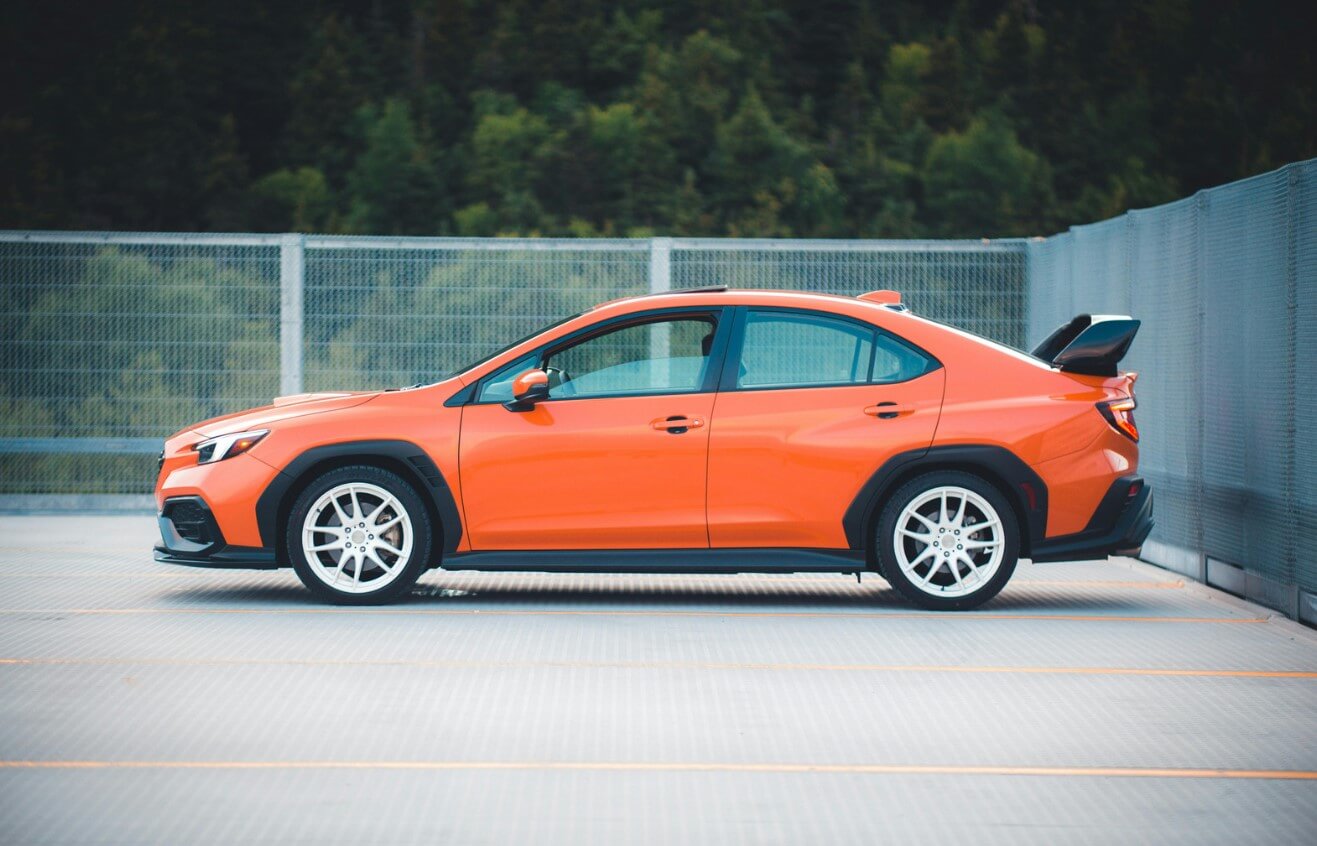
Let’s delve into a more detailed explanation of how SimpSocial leverages vehicle feature insights for automotive dealerships:
1. Centralized Vehicle Feature Insights Database
SimpSocial can integrate with or create a centralized database of vehicle feature information. This database isn’t just a list of features; it’s a dynamic resource with detailed descriptions, high-quality images, videos, and even 360° views of vehicle interiors and exteriors. This allows for consistent and accurate information sharing across all communication channels.
2. Targeted Communication Strategies
- Segmented Campaigns: Dealerships can segment their customer database based on demographics, past purchases, or expressed interests. SimpSocial then enables targeted campaigns highlighting specific vehicle features relevant to each segment. For example, a campaign targeting families could emphasize safety features and cargo space, while a campaign targeting young professionals might focus on technology and connectivity.
- Triggered Messaging: SimpSocial can automate messages based on customer actions. If a customer views a specific vehicle on the dealership website, SimpSocial can automatically send a text message highlighting a key feature of that vehicle, such as its fuel efficiency or advanced driver-assistance systems.
- Personalized Recommendations: Based on browsing history and past interactions, SimpSocial can personalize vehicle feature recommendations. If a customer has shown interest in SUVs with all-wheel drive, SimpSocial can proactively suggest models with those features and provide detailed information.
3. Vehicle Feature Insights Enhance Sales Interactions
- Quick Access to Information: Sales reps using SimpSocial can quickly access the vehicle feature database and share relevant information with customers via text, email, or even through the Guest Page portal. This eliminates the need to search for information and ensures that customers receive accurate and up-to-date details.
- Interactive Demonstrations: SimpSocial’s Video Texting feature allows sales reps to create personalized video demonstrations of specific vehicle features. They can show how the features work, highlight their benefits, and answer customer questions in real-time. This creates a more engaging and interactive experience for the customer.
- Comparative Analysis: SimpSocial can facilitate side-by-side comparisons of different models, highlighting the differences in their features. This helps customers make informed decisions and choose the vehicle that best meets their needs.
4. AI-Powered Customer Support
- Intelligent Responses: Sarah.ai can be trained to answer customer questions about vehicle features. Customers can text Sarah.ai with inquiries about specific models, and she can provide instant, accurate responses based on the information in the vehicle feature database.
- Proactive Engagement: Sarah.ai can proactively engage with customers who have shown interest in specific vehicles. For example, she could send a text message highlighting a key feature of a vehicle that the customer has viewed on the dealership website.
5. Seamless Integration and Analytics using Vehicle Feature Insights
- CRM Integration: SimpSocial integrates with CRM systems, allowing dealerships to track customer interactions and preferences related to vehicle features. This data can be used to personalize communication and target specific customer segments with relevant information.
- Performance Tracking: SimpSocial provides detailed analytics on the effectiveness of different communication strategies. Dealerships can track which features are most popular with customers, which campaigns are generating the most leads, and which sales reps are most effective at communicating vehicle feature insights. This data can be used to optimize communication strategies and improve sales performance.
Example Scenario
A customer shows interest in a new truck. They visit the dealership website and browse several models. SimpSocial tracks their browsing history and identifies their interest in trucks with towing capabilities. The next day, the customer receives a personalized text message from the dealership highlighting the towing capacity and other related features of a specific truck model.
The message includes a link to a video demonstration of the truck’s towing capabilities. The customer clicks the link and watches the video. They are impressed with the truck’s features and decide to schedule a test drive.
In this scenario, SimpSocial has effectively leveraged vehicle feature insights to engage the customer, build interest in a specific model, and ultimately drive a sale. This is just one example of how SimpSocial can help dealerships connect with customers and sell more cars.
Make Me More Profit Now
Define Automotive: How AI is Shaping the Industry

To define automotive in today’s world, we must move beyond traditional concepts of cars and transportation. The automotive industry has evolved into a technology-driven sector where AI, automation, and data analytics play a pivotal role in sales, customer engagement, and marketing strategies. Dealerships that want to explain automotive success must embrace digital transformation, leveraging AI-powered solutions like SimpSocial to stay ahead.
In this blog, we will explain automotive in the modern era, exploring how artificial intelligence is revolutionizing vehicle sales, dealership marketing, and customer service.
How Do We Define Automotive in the Digital Age?
To properly define automotive, we need to consider multiple aspects of the industry:
- Vehicle Technology Advancements – AI-powered vehicles, electric cars, and autonomous driving technology.
- Dealership Digitalization – The shift to AI-driven lead generation, customer management, and predictive analytics.
- Marketing and Engagement – Using AI to automate digital campaigns, optimize SEO, and increase lead conversions.
- Service and Maintenance Automation – AI-powered reminders, predictive diagnostics, and automated customer communication.
As we explain automotive, it’s clear that artificial intelligence is transforming every part of the industry, from how dealerships interact with customers to how they manage inventory and market their vehicles.
SimpSocial: Redefining Automotive Marketing and Sales
SimpSocial is leading the way in how we define automotive marketing and dealership operations. By leveraging AI-driven automation, predictive analytics, and intelligent CRM tools, SimpSocial helps dealerships enhance every aspect of their business.
1. AI-Powered Lead Generation
SimpSocial’s AI analyzes online traffic and customer interactions to explain automotive buyers based on their preferences.
Automated chatbots and texting platforms instantly engage leads, helping dealerships explain automotive engagement strategies.
2. Predictive Analytics for Smarter Sales
AI evaluates market trends to define automotive demand in specific regions.
Predictive insights allow dealerships to adjust inventory based on what customers are looking for.
3. AI-Driven Customer Engagement
AI chatbots provide 24/7 support, helping dealerships explain automotive customer service in a modern way.
Text automation ensures follow-ups and appointment reminders, strengthening dealership relationships with customers.
4. Digital Advertising Optimization
AI-powered ads target high-intent buyers, refining how dealerships define automotive marketing success.
Machine learning optimizes ad spend, ensuring higher conversions and lower costs.
Why AI Is Crucial to How We Define Automotive Sales Today
Personalized Customer Journeys – AI-driven platforms track user behavior and engagement to explain automotive sales funnels for individual buyers.
Automated Marketing Strategies – Dealerships no longer need to guess; AI-powered campaigns explain automotive trends and deliver highly targeted promotions.
Seamless Integration with CRM Systems – AI-enhanced customer data ensures dealerships define automotive relationships by providing personalized recommendations.
Increased Sales Efficiency – AI reduces human error and allows sales teams to focus on closing deals rather than administrative tasks.
How the Future Will Further Define Automotive Through AI
Looking ahead, AI will continue to explain automotive in several key ways:
Virtual Showrooms – AI will allow customers to explore vehicles digitally and get AI-powered recommendations based on their needs.
AI-Powered Test Drives – Predictive analytics will explain automotive test drive experiences by tailoring them to customer interests.
Automated Pricing Models – AI will dynamically adjust vehicle prices based on market demand and competition.
Fully AI-Driven Customer Support – AI will continue to enhance customer interactions, helping dealerships explain automotive excellence.
How SimpSocial Helps Define Automotive Success
To explain automotive in today’s digital-driven world, dealerships must embrace AI-powered solutions to optimize sales, marketing, and customer engagement. SimpSocial provides the tools necessary to revolutionize the way dealerships operate, ensuring that they stay ahead in an industry that continues to evolve.
From AI-driven lead generation to predictive customer insights, SimpSocial is shaping how we define automotive success. The future of the automotive industry belongs to those who leverage AI to maximize efficiency, improve customer relationships, and drive more sales.
Make Me More Profit Now
Automotive Icon: How AI Elevate Brand Recognition
In the world of car sales, an automotive icon is more than just a brand logo—it’s the visual representation of trust, reliability, and performance. A strong icon can create an emotional connection between a dealership and potential buyers, influencing their purchasing decisions. However, without a strategic marketing approach, even the most powerful icon can fail to make an impact.
This is where SimpSocial comes in. Through AI-driven customer engagement, automated marketing, and data-driven insights, SimpSocial helps dealerships leverage their icon to drive sales and brand recognition. Whether it’s a luxury badge like Mercedes-Benz or a performance-driven icon like Mustang, dealerships need a robust digital strategy to showcase their icon in front of the right audience.
Why an Automotive Icon Matters in Dealership Marketing
An automotive icon is one of the most recognizable features of a car brand. When customers see a well-known icon, it immediately evokes trust and excitement. Successful dealerships use AI-powered tools like SimpSocial to ensure their icon appears in targeted advertising, lead nurturing, and brand storytelling.
SimpSocial leverages AI-driven strategies to optimize icon presentation across digital platforms, maximizing exposure and engagement. Whether it’s through social media campaigns, AI-powered text messaging, or automated customer follow-ups, a dealership’s icon is a crucial asset that should be used effectively.
How AI Enhances an Automotive Icon’s Impact
- Automated Branding Campaigns – SimpSocial’s AI creates customized marketing campaigns that highlight the dealership’s automotive icon, ensuring brand consistency and recognition.
- AI-Driven Customer Engagement – By analyzing customer interactions, SimpSocial personalizes messages that reinforce the power of an icon in influencing buying decisions.
- Social Media Optimization – AI tools ensure that an icon gets the right exposure across Instagram, Facebook, and other platforms to attract potential buyers.
- Predictive Analytics – SimpSocial tracks how an icon impacts consumer behavior, helping dealerships fine-tune their branding strategies.
- Dynamic Ad Targeting – AI ensures that customers see dealership ads featuring the icon at the optimal time and place, increasing engagement rates.
SimpSocial and the Power of an Icon in Lead Generation
For dealerships, lead generation is directly connected to brand recognition. A well-placed automotive icon in an AI-powered ad campaign can boost engagement and improve conversion rates. With SimpSocial, dealerships can:
- Use AI to track which customers respond best to a dealership’s icon in marketing materials.
- Automate follow-ups with customers who showed interest in a specific icon and convert them into leads.
- Optimize online ad placements to feature the dealership’s automotive icon in the most effective way possible.
Future of Automotive Icons in AI Marketing
As AI continues to shape the automotive industry, the role of an automotive icon will expand beyond just branding. Smart dealerships will use AI to:
- Personalize ad campaigns featuring their icon based on customer preferences.
- Automate chatbots and text-based marketing to reference an icon that aligns with the customer’s interests.
- Utilize virtual reality (VR) to create immersive experiences showcasing a dealership’s icon in action.
The Icon and SimpSocial’s AI-Driven Advantage
An icon is more than a logo—it’s a dealership’s strongest marketing asset. Through AI-powered strategies, SimpSocial ensures that dealerships maximize the impact of their automotive icon, driving brand awareness, customer engagement, and ultimately, more sales.
By using advanced analytics, automated lead nurturing, and AI-driven advertising, SimpSocial helps dealerships leverage their icon like never before. AI powers the future of dealership marketing, with an automotive icon leading the way.
Make Me More Profit Now
Car Dealership Software: Transforming Dealership Operations

In an increasingly competitive automotive market, the right car dealership software can make all the difference. These tools streamline operations, enhance customer engagement, and optimize every stage of the sales and service process. Car dealership software streamlines inventory and automates follow-ups, helping dealerships stay ahead and meet customer needs.
What Is Car Dealership Software?
Car dealership software is a set of digital tools designed to simplify and automate dealership operations. It supports a variety of functions, including inventory management, customer relationship management (CRM), marketing, sales, service scheduling, and financial tracking. By integrating these functions into a unified platform, dealerships can improve efficiency and deliver exceptional customer experiences.
Key Features of Car Dealership Software
1. Inventory Management
- Tracks inventory in real-time, ensuring optimal stock levels of new, used, and trade-in vehicles.
- Simplifies vehicle pricing, ordering, and tracking across multiple locations.
2. Customer Relationship Management (CRM)
- Captures and organizes customer data, making it easier to follow up on leads and nurture relationships.
- Automates customer communication, such as appointment reminders and promotional offers.
3. Sales Tracking and Reporting
- Monitors sales performance, from lead generation to closed deals.
- Provides real-time insights into key metrics like conversion rates and revenue.
4. Service Scheduling and Management
- Allows customers to schedule vehicle maintenance and repairs online.
- Tracks service history and sends reminders for upcoming appointments.
5. Marketing Automation
- Automates email, SMS, and social media campaigns, targeting customers with personalized offers.
- Provides analytics to measure the success of marketing efforts.
6. AI-Driven Features
- Uses AI to analyze customer behavior, prioritize leads, and automate routine tasks.
- Includes advanced texting platforms for customer engagement and follow-up.
7. Document and Contract Management
Streamlines the generation, storage, and signing of sales contracts and other documents.
8. Financial Tools
- Tracks dealership expenses, revenue, and profit.
- Integrates with accounting software to simplify financial reporting.
9. Reporting and Analytics
- Provides detailed reports on inventory, sales, marketing campaigns, and customer interactions.
- Helps dealerships make data-driven decisions to optimize performance.
Benefits of Car Dealership Software
1. Streamlined Operations
Automates repetitive tasks, freeing up time for staff to focus on customer interactions.
2. Improved Customer Experience
Enhances communication and personalization, ensuring a seamless customer journey.
3. Increased Sales Efficiency
Helps prioritize leads, track progress, and close deals faster.
4. Better Inventory Management
Ensures the right vehicles are in stock at the right time, reducing carrying costs.
5. Enhanced Marketing Effectiveness
Targeted campaigns and detailed analytics maximize ROI on marketing efforts.
6. Data-Driven Decision Making
Real-time insights empower dealerships to identify opportunities and address challenges quickly.
7. Scalable
Supports growth by enabling dealerships to handle higher volumes of sales and service requests efficiently.
Popular Car Dealership Software Solutions
1. SimpSocial
- Offers AI-powered tools for lead generation, customer engagement, and appointment scheduling.
- Features advanced texting platforms, CRM integration, and marketing automation.
2. DealerSocket
- Comprehensive software for managing inventory, CRM, and sales.
- Includes tools for digital retailing and service management.
3. VinSolutions
Combines CRM and inventory management with analytics and marketing automation.
4. Reynolds and Reynolds
A robust platform offering solutions for sales, service, and financial management.
5. Autosoft DMS
Simplifies dealership management with tools for accounting, inventory, and customer management.
6. CDK Global
Provides an integrated platform for inventory, sales, and customer engagement.
Challenges in Adopting Car Dealership Software
1. Implementation Costs
Initial setup and training can be costly, particularly for smaller dealerships.
2. Learning Curve
Staff may need time to adapt to new systems and workflows.
3. Integration Issues
Ensuring compatible with existing systems can be challenging.
4. Data Security
Protecting customer and dealership data is essential, especially with cloud-based solutions.
The Future of Car Dealership Software
1. AI-Powered Insights
AI will provide deeper insights into customer behavior, enabling hyper-personalized marketing and sales strategies.
2. Cloud-Based Platforms
Cloud solutions will offer greater flexibility and scalable, making it easier for dealerships to manage operations.
3. Omnichannel Retailing
Car dealership software will integrate online and offline sales channels for a seamless customer experience.
4. Enhanced EV Support
Tools for managing electric vehicle (EV) inventory, charging infrastructure, and service needs will become standard.
5. Augmented Reality (AR) and Virtual Reality (VR)
Dealerships will use AR and VR to create immersive experiences, such as virtual test drives and 3D vehicle tours.
Conclusion
Car dealership software is transforming the automotive industry by streamlining operations, enhancing customer engagement, and driving sales. From inventory management to AI-powered marketing, these tools empower dealerships to stay competitive in an ever-changing market.
As technology continues to evolve, investing in the right car dealership software will be essential for long-term success. To improve efficiency, enhance customer satisfaction, or grow your business, these platforms support a successful dealership.
Ready to take your dealership to the next level? Explore the latest car dealership software solutions today!